Welcome to Boley
 By EVAN F. MOORE
By EVAN F. MOORE
FREE AND FREAKY SINCE 1971 | AUGUST 6,
2020
A Chicago writer explores his family’s ties to a historic Oklahoma town.
| 12
CITY LIFE
03 Sightseeing Chicago at the turn of the century through the eyes of Rudolph F. Michaelis

FOOD & DRINK
04 Feature Jasmine Sheth is Chicago’s first dabbawala.
Myles spent 28 years in prison, only to be released into a world in lockdown. He’s happier than he’s been in a long time.
isolation, community, and borders.
Our critics review releases that you can enjoy at home.
35 Early Warnings Rescheduled concerts and other updated listings 35 Gossip Wolf Rapper-producer Montana Macks drops a collection of soulful instrumentals, Anni Rossi puts out a playful video mixtape, and arts nonprofit Quiet Pterodactyl releases an all-star compilation to benefit Chicago music venues.
FILM
12 Black History For generations, his family has owned a piece of untold Black history in Boley, Oklahoma. This year, he finally got to see it.
ARTS & CULTURE
16 Comedy Remembering iO’s humble beginnings and reflecting on its dramatic end
18 Lit Semicolon Bookstore is a community, on and offline.
20 Profile Kathleen Rooney’s love letter to pigeons
NEWS & POLITICS
06 Joravsky | Politics It’s about time Dems stop treating Bill Clinton like he’s a hero.

08 Isaacs | Culture ArtNight, a passion-sharing show-and-tell, has moved online.
10 Criminal Justice Roosevelt
21 History Bronzeville Children’s Museum may not have planned for the pandemic, but it was ready.
THEATER

22 Changing Spaces Prop Thtr loses its home.
24 Online Performance Two streaming productions look at

25 Review A Most Beautiful Thing reunites the first all-Black high school rowing team.
26 Small Screen Matt Damon Improv’s new web series is filled with Zoom meeting disasters and personal massager triumphs.
27 Movies of Note She Dies Tomorrow is a worthy examination of a collective unravelling; The Speed Cubers breaks the competition documentary mold; and Spinster is a breezy, feel-good watch about carving your own path.
MUSIC & NIGHTLIFE
28 Feature Diagnosed with PTSD, Chicago rapper G Herbo wants to normalize therapy for people who’ve suffered like he has—and he’s giving away hundreds of sessions.
32 Records of Note A pandemic can’t stop the flow of great music.
OPINION
Savage Love Dan Savage offers advice to someone freaking out because his boyfriend wants him to paint his toenails.
TO CONTACT ANY READER EMPLOYEE, E-MAIL: (FIRST INITIAL)(LAST NAME)
@CHICAGOREADER.COM
PUBLISHER TRACY BAIM
EDITORS IN CHIEF SUJAY KUMAR, KAREN HAWKINS
CREATIVE LEAD RACHEL HAWLEY
MUSIC EDITOR PHILIP MONTORO
THEATER AND DANCE EDITOR KERRY REID
CULTURE EDITOR BRIANNA WELLEN
ASSOCIATE EDITOR JAMIE LUDWIG
SENIOR WRITERS MAYA DUKMASOVA, LEOR GALIL, DEANNA ISAACS, BEN JORAVSKY, MIKE SULA
EDITORIAL ASSOCIATE S. NICOLE LANE GRAPHIC DESIGNER AMBER HUFF
LISTINGS COORDINATOR SALEM COLLO-JULIN CONTRIBUTORS ED BLAIR, NOAH BERLATSKY, LUCA CIMARUSTI, MARISSA DE LA CERDA, MARI COHEN, JOSH FLANDERS, SHERI FLANDERS, JACK HELBIG, IRENE HSAIO, CATALINA MARIA JOHNSON, MONICA KENDRICK, STEVE KRAKOW, NOËLLE D. LILLEY,JAMIE LUDWIG, MAX MALLER, ADAM MULLINS-KHATIB, J.R. NELSON, JEFF NICHOLS, MARISSA OBERLANDER, MATTHEW SIGUR, CATEY SULLIVAN
DIRECTOR OF DIGITAL JOHN DUNLEVY
SOCIAL MEDIA COORDINATOR JANAYA GREENE STAFF AND SPECIAL PROJECTS ASSISTANT TARYN ALLEN
STRATEGIC INNOVATION DIRECTOR MARIAH NEUROTH DEVELOPMENT DIRECTOR COLETTE WILLARD MEDIA PARTNERSHIPS COORDINATOR YAZMIN DOMINGUEZ

EXECUTIVE ASSISTANT SANDRA L. KLEIN MEDIA PARTNERSHIPS AND DEVELOPMENT ADVISOR ABHIMANYU CHANDRA
SPECIAL EVENTS CONSULTANT KRISTEN KAZA

ADVERTISING
312-392-2970, ADS@CHICAGOREADER.COM CLASSIFIEDS: CLASSIFIED-ADS@CHICAGOREADER.COM

Map of COVID-19 deaths

Zip codes with nursing homes and Brown and Black populations have been hardest hit.
Uphill battle for housing
“There is a system in place that keeps people homeless and poor,” says Delia Ramirez.
ON THE COVER: PHOTO ILLUSTRATION BY RACHEL HAWLEY.
VICE PRESIDENT OF SALES AMY MATHENY SALES DIRECTOR AMBER NETTLES CLIENT RELATIONSHIP MANAGER TED PIEKARZ SENIOR ACCOUNT REPRESENTATIVES LENI MANAA-HOPPENWORTH, LISA SOLOMON CLASSIFIED SALES MANAGER WILL ROGERS
NATIONAL ADVERTISING
VOICE MEDIA GROUP 1-888-278-9866 VMGADVERTISING.COM JOE LARKIN AND SUE BELAIR
DISTRIBUTION CONCERNS distributionissues@chicagoreader.com
#BlackArtMatters
Two teens created a coloring book to highlight Black joy, influential Black figures, and impactful change rooted in the Black Lives Matter movement.
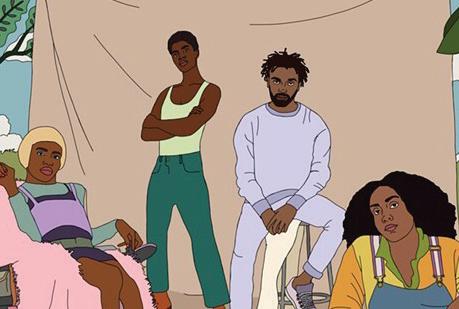
2 CHICAGO READER - AUGUST 6, 2020 ll
38 Jobs 38 Apartments
38
THIS WEEK
36
CLASSIFIEDS
& Spaces
Marketplace
CHICAGO READER | AUGUST 6, 2020 | VOLUME 49, NUMBER 41
IN THIS ISSUE THIS WEEK ON CHICAGOREADER.COM
312-392-2970 CHICAGO READER L3C BOARD PRESIDENT DOROTHY R. LEAVELL TREASURER EILEEN RHODES AT-LARGE SLADJANA VUCKOVIC CONSULTANT CAROL E. BELL THE 501C3 FISCAL SPONSOR FOR THE CHICAGO READER IS THE OAK PARK-RIVER FOREST COMMUNITY FOUNDATION. READER (ISSN 1096-6919) IS PUBLISHED WEEKLY BY CHICAGO READER L3C 2930 S. MICHIGAN, SUITE 102 CHICAGO, IL 60616 312-392-2934, CHICAGOREADER.COM
© 2020 CHICAGO READER PERIODICAL POSTAGE PAID AT CHICAGO, IL ALL RIGHTS RESERVED.
READER, READER, AND REVERSED R: REGISTERED
COPYRIGHT
CHICAGO
TRADEMARKS ®
CITY LIFE




through the eyes of Rudolph F. Michaelis























From 1900 to 1905, his photographs captured slices of everyday life.


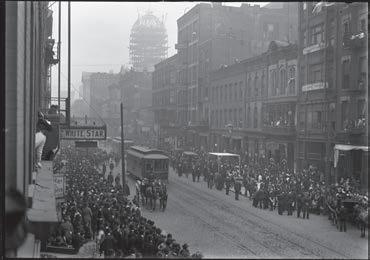

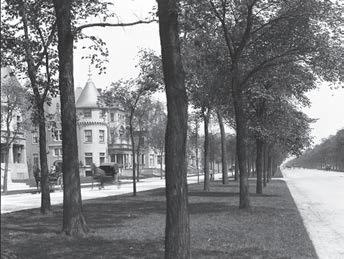

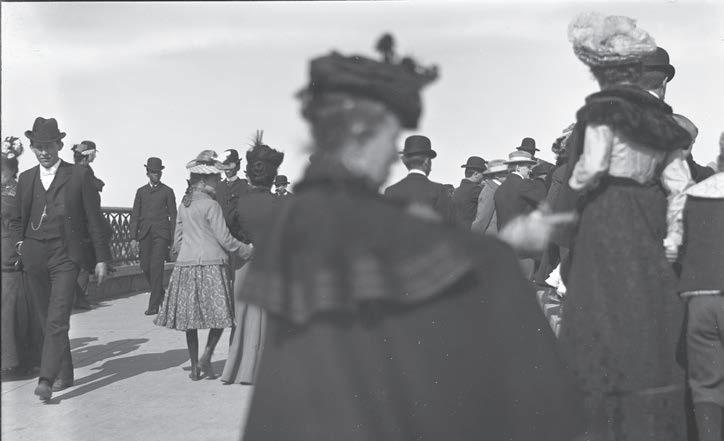 By JEFF NICHOLS
By JEFF NICHOLS
It’s a pity that Rudolph F. Michaelis never got his due as an artist during his time in Chicago. Born in Marion County, Missouri, in 1869 to German immigrants, Michaelis came to Chicago in the early 1890s. He worked for J.P. Sullivan & Co., a south-side interior design shop. In 1905, he relocated to Berkeley, California, where he set out as a self-employed house painter.

Glass-plate photographs discovered in Michaelis’s attic in Berkeley nearly eight decades after his death show that Rudolph was not much of a painter. He photographed a few of his canvases, which included ho-
hum scenes of the lakefront and an awkward composition of cats playing musical instruments. But his photographs of Chicago are absolutely beautiful. From roughly 1900 to 1905, Michaelis took pictures of peaceful city parks, burned-out apartment buildings, lonely streets, and bustling crowds.
While it’s too bad that Michaelis didn’t stick with photography, we are fortunate in that his collection was donated to the University of California-Berkeley’s Bancroft Library. The Bancroft Library offered the Newberry Library the photographs Michaelis shot in the midwest. v
AUGUST 6, 2020 - CHICAGO READER 3
the turn
the century
sightseeing Chicago at
of
IMPORTS & DOMESTICS ‘17 Honda CR-V LX AWD ........Automatic, Full Power, White, 24205A ........$17,995 ‘20 Kia Soul LX ..................................Manual, 8K, Cherry Black, P6475 ........$14,995 ‘16 Honda Fit EX ................Automatic, Moonroof, 13K, Black, 24485A ........$13,995 ‘18 Hyundai Elantra Value Ed. ..Monroof, Blind Spot, Silver, 24523A ........$12,995 ‘13 Hyundai Sante Fe 2.0T AWD .. Auto., Full Power, Black 23373B ........$11,995 ‘15 Toyota Corolla LE ....................Automatic, Keyless, Silver 24504A ........$10,995 ‘14 Buick Encore ............Automatic, 1-Owner, 42K, Ruby Red, 23690A ........$10,995 ‘15 Kia Soul ....................................Manual, Full Power, Alien2, 21917A ..........$7,995 ‘0z9 Chevy HHR LT ........................Automatic, Sunroof, Beige, 24265A ..........$6,995 ‘13 Hyundai Tucson GLS ......Automatic, Full Power, Bronze, 24460A ..........$6,995 ‘08 Jeep Grand Cherokee Laredo 4x4Automatic, 64K Black, 24250A ......$6,995 SUBARU FORESTERS ‘16 Forester Touring ..Automatic Sunroof, Leather, Silver, 23651A ........$18,995 ‘17 Forester Ltd. ..........Automatic Sunroof, Leather, Silver, 24102A ........$17,995 ‘15 Forester Prem. Automatic, Sunroof, Heated Seats, Silver, 23349A ....$15,995 ‘15 Forester 2.5i ....................Automatic, Full Power, Silver, 24325A ........$14,995 SUBARU OUTBACKS ‘16 Outback Prem. ......Automatic, All Weather, Alloys, Black, 24117A ........$17,995 ‘15 Outback Ltd. Automatic, Sunroof, Leather, Black, 23927A ........$17,995 SUBARU CROSSTREK / WRX / ASCENT ‘19 Ascent .................... 8 Passenger, Sunroof, Eyesight, 4K, Grey, P6528 ........$24,995 ‘18 WRX Ltd. ....................................Manual, 8K, Heritage Blue, P6547 ........$24,995 ‘17 Crosstrek Ltd.. ............ Automatic, Leather, Sunroof, White, 34321A ........$19,995 EvanstonSubaru.com 3340 OAKTON - SKOKIE • 847-869-5700 A+ RATED TOP-QUALITY INSPECTED USED CARS & SUV’ S *Add tax, title license and $300 doc fee. 0% financing for 63 months. Monthly payment of $15.87 per $1,000 borrowed. Finance on approved credit score Subject to vehicle insurance and availability. Ends 8/31/2020 When A Great Deal Matters, Shop Rob Paddor’s... Voted “Best Auto DeAlership ” By CHICAGO Voters’ Poll 2019 Evanston Subaru in Skokie 0% 0% 0% 0% ASCENT IMPREZA 0% 63 MONTHS ON NEW 2020’S Monday-Friday Monday-Friday Saturday Saturday 9:00AM-8:00PM 9:00AM-6:00PM Social Distancing & Face Masks will be Required for all Customers and Employees APPOINTMENT REQUIRED NO 2021 SUBARU CROSSTREK 1.9% FINANCING Evanston Subaru
From top le : Funeral procession for Sam Moy, “King of Chinatown,” in 1902; Grand Boulevard (now Martin Luther King Jr. Drive) in 1901; Lincoln Park, undated RUDOLPH F. MICHAELIS / COURTESY NEWBERRY LIBRARY
Jasmine Sheth is Chicago’s first dabbawala
Each week her Tasting India delivery service dives deep into a different regional Indian cuisine.
By MIKE SULA
Each school day the dabbawala delivered a fresh, hot, home-cooked lunch to Jasmine Sheth (and many others), each dish packed into a stack of three circular aluminum tins, or ti ns, with roti on the side, a salted lassi, and something sweet. The food itself was cooked every morning by her mother, and sent o via Mumbai’s sprawling lunchbox delivery system by bicycle and rail.
The tins returned the same way each evening. There were thousands of dabbawalas, or “lunchbox persons,” working each day in the city, but in spite of the system’s dizzying scope—the connection was personal. “I adored my dabbawala,” she recalls. “He always was such a jolly old man. He’d bring me raw mango and tamarind pods sprinkled with salt and chili, because he knew I loved snack-
vada JASMINE SHETH
ing on it. Dabbawalas tend to develop close friendships with their clients because they sometimes work the same route for years.”
Sheth, who’s 39, grew up in Bombay (before it was Mumbai), but from an early age she began to accumulate knowledge of India’s vastly di erent regional cuisines. Summers were spent at farmhouses on agricultural land her father, a civil engineer, helped develop, or taking long family road trips. “I had a ton of cousins all over India,” she says. “Visiting them over vacation really exposed me to di erent cuisines. Cooking and feeding people was a way to connect with folks, and no matter where we went, food was the central experience for us.”
She learned that from her mother. “I remember standing by her side, asking a million questions. She is very much an eyeball type of cook. You smell it, and you see the texture and the color, and you determine if it needs anything else.”
Sheth left home in 2003 for New Jersey, where she earned her MBA in human resource management and a master’s in organizational psychology, then moved to New York City for a series of corporate jobs. In 2012, she was laid o from an ad agency and contemplating her next move. “I was trying to keep busy and I just started cooking at home and inviting friends for dinner.” This led to a new career throwing pop-ups and underground dinners, and working as a private chef for various online platforms that sent her all over the country. She didn’t want to be pigeonholed as an “Indian chef,” so she kept a deliberate distance from the food she grew up with. It “was always Indian-inspired but I tried to meld Indian and Mediterranean fl avors, used some French techniques I learned. It was sort of this fusion cuisine with American influences as well.”
In 2017, she won a Women in Culinary Leadership grant from the James Beard Foundation, which sent her to Chicago for a six-month externship at Rohini Dey’s Indian-Latin Vermilion. Her goal was to learn back-of-the-house restaurant operations. After a month she was holding her own in the kitchen, she says, but missing human connection. “I couldn’t interact with my guests and see their reactions to the food, which was what my pop-ups afforded me.” She switched to the front of the house and wound up managing the restaurant for an extra half
year before taking a tour of the Boka Group, with managing stints at GT Fish & Oyster, GT Prime, and Swift & Sons, and then settling in at Momotaro for a year.
Meanwhile, early last year she launched the Chicago chapter of the community-driven Queer Soup Night fundraising series, and in October, worn out from the restaurant business, she left Momotaro and took a more lucrative job in management consulting, with the aim of supporting a return to pop-ups and more intimate and community-oriented cooking.
But “when COVID hit, I obviously couldn’t host, or gather large amounts of people. I had been wracking my brain thinking about what I can do. It was such a challenging time for a lot of people, and what brought me a lot of comfort was speaking to my family, cooking my family recipes every day, and eating my own comfort food.”
In early May, she launched Tasting India, a meal delivery “dabba service,” each week announcing on her Instagram, @the_amusebouche, a thali -style set of dishes from one specific Indian regional cuisine, taking virtual orders and payment, and delivering, in the beginning, mostly to Facebook friends and coworkers.

There would be no more fusion. The fi rst menu focused on Punjab, the northern Indian state whose food westerners are probably most familiar with—except the season’s last ramps were folded into her roti dough, and not many restaurants on Devon offer vegetable khichdi , “an Indian ‘detox’ dish made with mung beans, lentils, rice, and vegetables flavored with the immune-boosting power of turmeric.”
From there she moved southwest to Gujarat, featuring, among a half dozen other dishes, the staple wheat fl our pudding sheero. Then it was west to Bengal (shorshe dharosh—okra in mustard and poppyseed sauce); on to Tamil Nadu ( poliyogare —tamarind and peanut rice); Rajasthan (gatte ro saag chickpea flour dumplings simmered in yogurt curry); and Goa (mushroom cafrael —a dish brought to the region by African soldiers in the Portuguese army). “The intent was very much about educating folks about Indian food. In the western world our view of Indian cuisine is, ‘I want a curry or chicken tikka masala or saag paneer .’ Those are amazing dishes and I very much enjoy eating those things, but that is not what I grew up eating day to day. What I really want to do is show people there are so many more flavor profiles,
4 CHICAGO READER - AUGUST 6, 2020 ll FOOD & DRINK FOOD FEATURE
Batata
techniques, and regional cuisines that are not showcased in any restaurant here in the U.S.”






























































































































































































Not that everyone needs to be educated. About half of her regular clients are Indian and “at one point or another, some of them reach out and say something like, ‘Oh I grew up in Goa, I’m really looking forward to this sorak coconut milk vegetable curry.’ While that’s amazing it’s also a lot of pressure, because I want to make sure I’m doing it justice.”
On the other hand it’s probable that the other half have never tried the scarfable batata vada , mustard-seed-and-curry-leafspiked, chickpea-battered potato croquettes; or misal , sprouted moth beans simmered in tomatoes and onions, and topped with gathia , crunchy chickpea noodles; or poran poli, flatbread stu ed with split peas and the unrefined sugarcane jaggery, fragrant with green cardamom and sa ron, drizzled with melted ghee.
I’d never tried those things either, but once I had, I began wondering how I could get them again. Those dishes were part of the Maharashtrian thali, her 11th and maybe her most personal—Maharashtra is her home state, after all. As with each week’s menu, she o ers detailed descriptions of each dish, historical context, and personal stories about the people she learned to cook them from, and eat them with, when she was growing up.
On the Bengali menu, she vividly described visits to Kolkata, her mother’s hometown, and the sweet cardamom-laced labneh it’s known for: “My uncle’s mission in life was to ensure we enjoyed every single fresh dessert in the city. Mishti Doi were his favorite,

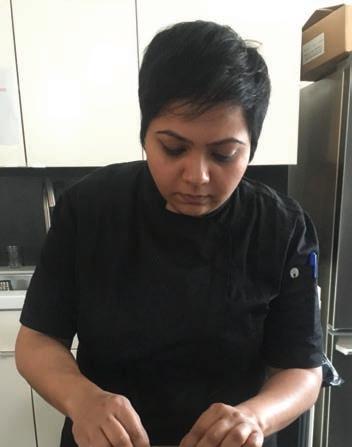
and each year at the end of our vacations, he would drop us o at the train station and hand us a clay pot full of fresh Mishti Doi. We could not/would not board our train without it!”
Tasting India is, for now, a one-woman show. Sheth announces the week’s menu on Sunday; she researches, shops, preps, and cooks throughout the week; then masks up on Fridays or Saturdays and delivers tidily packaged, labeled, and wrapped dishes, along with biodegradable thali trays to eat them from, all preceded by regular text updates on arrival times.
This Saturday she returns to Punjab, specifically the city of Amritsar, where Sikh temples host free, volunteer-driven, vegetarian community feasts called a langar. “Langar ka khana (the food at a langar) is always a vegetarian meal consisting of a dal (lentil soup), rice, vegetable and roti,” she writes. “At the end you are also served the most delicious bhog/prasad (a sweet o ering from God). It’s simple and peaceful, one of the best meals and experiences you will enjoy in your life.” A part of this week’s proceeds will go toward creating a langar for Uptown/Edgewater tent-city residents.
Still, in the beginning, while she was doing it all while holding down her day job, a portion of each week’s proceeds went to organizations supporting restaurant workers, the homeless, or Black Lives Matter, but four weeks ago she was laid off again, and currently Tasting India isn’t enough to support her. She’s trying to scale up. She envisions a product line (she makes her own ghee), and a co ee table cookbook featuring 52 recipes, highlighting one from each week’s thali.
“I would love to see every day or week my own network of dabbawalas that are passionate about bringing Indian cooking to Chicago,” she says. “I’ve cooked for 1,500 people out of a small studio kitchen in Manhattan. I know I can do it. I just feel tremendously fortunate to have the clients that I have every week. They have a ton of di erent choices in terms of chefs and food they can order. There are those who started with me in week one and still order from me every single week today. Having that consistency of companionship has really boosted my confidence.” v
@MikeSula
AUGUST 6, 2020 - CHICAGO READER 5
FOOD & DRINK
Search the Reader’s online database of thousands of Chicago-area restaurants at chicagoreader.com/food ENJOY RESPONSIBLY © 2020 Virtue Cider, Fennville, MI 49408 FROM OUR FARM TO YOUR DOOR VIRTUE, IT’S AT OUR CORE VIRTUECIDER.COM TO ORDER
For now, Jasmine Sheth’s Tasting India delivery service is a one-woman show. FORAM SHETH
NEWS & POLITICS



POLITICS
Bill Clinton’s enablers
By BEN JORAVSKY


Iwas somewhere in the middle of Bill Clinton’s speech at John Lewis’s funeral when it hit me—I’m so through with this guy.
If I never see Bill Clinton’s face again at another state funeral or convention or, really, any important cultural event, it will be too soon.

I realize he was at the funeral because of his friendship with Lewis and because his status as a former president lent stature to the tribute Lewis deserved.
But Clinton abused the presidential office. Much like Donald Trump has. OK, not as much as Trump. But bad enough.
Not sure what it was about Clinton’s speech that irritated me the most. It might have been the passive-aggressive shot he took at Bernie Sanders when he slyly smiled and “thanked” South Carolina congressman James Clyburn for “with a stroke of a hand, ending an intrafamily fight within our party.”
Man, the Clintons will never forgive Bernie for having the audacity to challenge Hillary back in 2016.
Or, it may have been his gratuitous swipe at Stokely Carmichael, a prominent leader in the fight for civil rights and Black Power.
Like Lewis, Carmichael was a fearless advocate. Like Lewis, he was a Freedom Rider. At age 19, Carmichael got arrested for trying to integrate the white section of a segregated train bound from New Orleans to Jackson, Mississippi. He spent two months in the notorious Parchman penitentiary—a prison farm in Mississippi. In contrast, Bill Clinton had it easy. So who

the hell is Bill Clinton to criticize Stokely Carmichael?

Listening to Clinton take his shots at Sanders and Carmichael brought back memories of the “triangulation” games he mastered as a presidential candidate.
It reminded me of how he rarely missed a chance to adopt Republican talking points to bash progressives in order to win over swing voters. Essentially, saying things like—Don’t worry, I’m not one of those soft-on-crime Democrats you’ve grown to hate. And then he’d turn right around and tell progressives, You gotta vote for me ’cause you have no choice.
It reminded me of how he rushed home to Arkansas from the 1992 campaign trail to figuratively pull the trigger on electrocuting Ricky Ray Rector—just to demonstrate he was di erent than Michael Dukakis, the 1988 presidential nominee, who opposed capital punishment. And may have lost the election because of it.
Or how he seized the opportunity to criticize Sister Souljah and Jesse Jackson. It was a calculated move to let white people know Bill Clinton wasn’t one of those white liberals who was afraid to criticize Black people.
It was such a blatantly obvious campaign moment that they named a thing after it—a Sister Souljah moment.
At the time, Clinton said he was taking a moral stand in criticizing Sister Souljah.
What a joke, coming from a man whose reputation as a philanderer was already well known.
And that brings me to his so-called a air with
6 CHICAGO READER - AUGUST 6, 2020 ll
It’s about time Dems stop treating Bill Clinton like he’s a hero.
$45 HOODIE chicagoreader.creativeswhocare.org $25 TEE $35 LONG SLEEVE TEE The Chicago Reader publishes compelling local journalism by and for Chicago. As we look around at our new reality, it is clear now more than ever how important community journalism is. Thank you for your commitment to an independent Chicago.
Artwork by @merlotism
NEWS & POLITICS





I’m so over this guy. That's right, Bill, we're breaking up. GAGE SKIDMORE
































Monica Lewinsky, a 22-year-old White House intern, that went on for the better part of two years.

Back then, Clinton’s defenders were angrier at the prosecutors and Republicans who impeached Clinton for perjury and obstruction of justice.
Back then Clinton’s defenders said the Republicans were making a mountain out of a molehill. And that it was no one’s business what Clinton and Lewinsky did. As they were consenting adults. And the only one who should care is Hillary. So, shut up already.
I should know what Clintonian defenders were saying—’cause I was one of those defenders saying it.
How pathetic it sounds now. As though there’s such a thing as consenting adults when one person’s the president of the United States and the other is an intern.
I realize the Republicans who hounded Clinton were a bunch of hypocrites. And still get a charge at how e ectively he enraged them by ducking and dodging their blows.
But in retrospect, we were all a bunch of enablers. Not much better than the MAGA-hat crowd that remains silent in the face of Donald Trump’s crimes.
In retrospect, I think we might have been better o had Congress thrown Clinton out of o ce. His second term was largely a waste of time. So many good people wasted so much energy and e ort trying to save his sorry ass from impeachment.
If only we fought so hard to enact universal health care.
Bill Clinton has never apologized to Monica Lewinsky for how he treated her. Or how his followers treated her. Or how the media treated
her. Or how the talk show hosts mocked her. Turning her into the butt of their jokes.
When asked in 2008 if he would handle the response to revelations of his a air with Lewinsky differently, Clinton replied: “If the facts were the same today, I wouldn’t.”
Who the hell knows what that means. It’s classic Clinton slipperiness. Slick Willy to the end.
Bill Clinton was an anchor around the neck of Al Gore in 2000. His inability to curb his appetites and impulses led to George W. Bush’s victory. Which led to two wars and the loss of thousands and thousands of lives.

Just as he was the anchor around Hillary’s neck back in 2016. Trump was able to survive the fallout over his infamous “grab ’em by the pussy” comment in large part because he said Bill Clinton was no better. “Bill Clinton has said far worse to me on the golf course,” Trump said at the time.
It may have been the one time Trump wasn’t lying.
Now we have Clinton’s embarrassing connection to Je rey Epstein. Virginia Giu re, who’s accused Epstein of sex tra cking, says she saw Clinton visiting Epstein at his mansion on Little Saint James Island in the Caribbean.
“I remember asking Je rey, ‘What’s Bill Clinton doing here?’” Giu re said. “And he laughed it o and said, ‘Well, he owes me favors.’”
A spokesman for Clinton denied the former president had ever been to Little Saint James Island.
Of course, Clinton’s the same guy who looked America in the eye and said: “I did not have sexual relations with that woman, Ms. Lewinsky.”
Hey, Dems, how long are you going to cover for this guy? It’s high time we stopped being Bill Clinton’s enablers. v
AUGUST 6, 2020 - CHICAGO READER 7
Play the summer line-up of Instant Tickets and see for yourself. Learn more at www.IllinoisLottery.com IS NOT FREE chicagoreader.com/donate CHICAGO READER MASKS CHICAGOREADER.THREADLESS.COM pleaserecyclethispaper
@bennyjshow
CULTURE
That thing you love to do?
ArtNight wants to see it.
By DEANNA ISAACS
Salon is the word that popped to mind when I first heard about ArtNight Chicago. It used to be a thing. Not the place we go for a haircut (in spite of COVID-19, that’s still a thing), but those wine-fueled conversational forums that got their start in the 17th century and were still going strong in the 19th. Wikipedia defines them as gatherings, usually in the home of an “inspiring host,” where guests amuse each other and “increase their knowledge,” just by talking. The last one I attended in Chicago was in the 1990s, when, I think, they were eclipsed by book clubs.
The next thing I thought was “talent show,” but that wasn’t right either. As founder Jared Hochberg was quick to tell me, no one needs any special talent to participate.
ArtNight, it turns out, is more like a showand-tell with social hour, or a very friendly open mike. For one thing, it’s sober as a church
picnic. There’s no alcohol (or, at least, there wasn’t before the pandemic turned it into a Zoom event). Also, no sense of competition. Just an earnest, nonjudgmental forum where—though the major demographic is 20-something—everyone’s welcome to share whatever they love to do, and to learn about the passionate pursuits of others. That might be art, but it could be anything.
Hochberg launched ArtNight in 2016, his senior year at the Oberlin Conservatory. The son of former Old Town School of Folk Music teacher and administrator Wayne Hochberg, he’d been lucky enough to grow up in a home where “the assumption was that music is for everyone, that anyone can play—just give them a maraca—anyone can join in and sing.”
He was disappointed, he says, to find that “a lot of really wonderful musicians” who were at Oberlin but not in the conservatory were
too intimidated to make music there at all: “It seemed like the need to impress, the need to be great, was a hindrance to just doing it for your own reasons, out of a sense of joy.”
“It started in my dorm room and was all music at first,” Hochberg recalls: “There’d be a hip-hop group, followed by a string quartet.” Then, gradually, he says, there were other things—a math presentation, a sign language demonstration—and it morphed into a place to share whatever people were passionate about.
“It was really special,” he says, “on a Friday night, to deeply engage in a science presentation, after a band played.”
In 2017 Hochberg came back to Chicago and began putting ArtNights together here, with longtime friend, cofounder, and fellow musician Rob Klein. They’ve been holding two events each month: a brisk midmonth showcase, where as many as 15 “sharers” get five
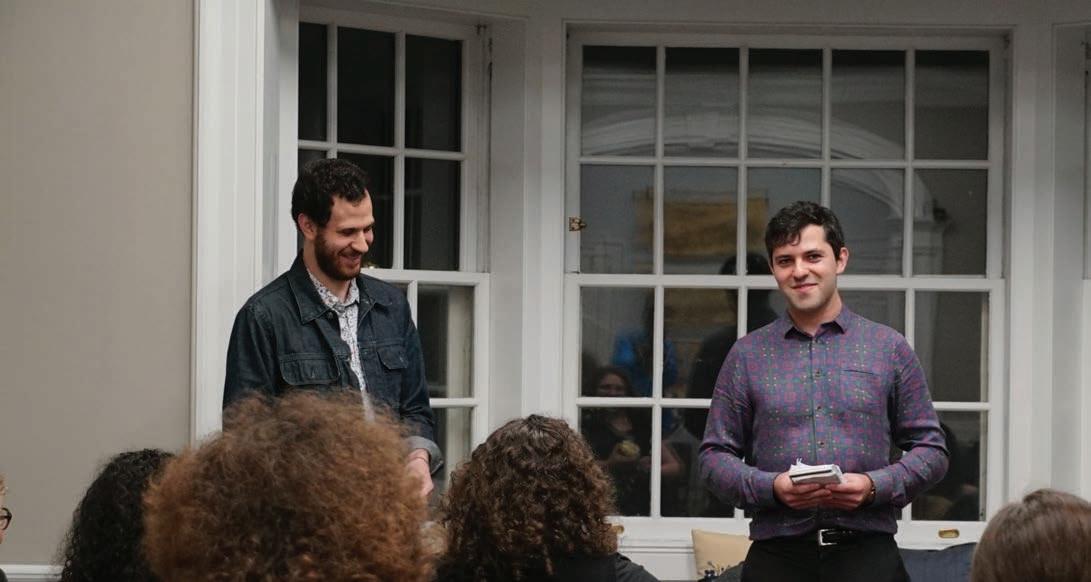
minutes of presentation time each; and First Fridays, with six presenters taking 15-minute slots. Both events open with an icebreaking activity; First Fridays also include small group discussions.
Before the shutdown, ArtNights were held in the apartments of a rotating group of hosts, and included postprogram hangout time and potluck food. They’re still, in theory, alcohol-free, which Hochberg says helps di erentiate an ArtNight from a party. “We want to support people in feeling comfortable and confident,” Hochberg says. “Our aim is to foster an environment that’s open and accepting, so that people don’t need to drink.” ArtNight’s not anti-alcohol, he adds, it’s just “a couple nights of the month where you don’t have a glass of wine.”
Since April, it’s been happening online. At the First Friday event I attended in July, the icebreaker had everyone introducing a favorite book, and the discussion probed the American dream. Presentations included a demonstration on how to make your own rainwater garden, a two-person performance of an original radio drama about Elijah McClain’s fatal encounter with Aurora, Colorado, police, and a self-taught guitar player/vocalist’s version of “It Ain’t Me.” At the midmonth meeting in June, the five-minute gigs ranged from financial advice on investing to a short story excerpt read by its author and a Scottish folk song performed by Hochberg himself.
Until now, ArtNight’s been a word-of-mouth phenomenon, attracting friends of friends and their friends. The COVID-enforced shift to online events has freed it of space and geographic limitations and could actually broaden its reach, Hochberg says. With that in mind, starting with the next midmonth event, they’ll be contacting organizations in all of Chicago’s 77 o cial communities (alphabetically, three at a time), looking for folks of any age willing to hop onto Zoom and share their passion in five-minute slots, or simply to attend and make some new friends. But first, there’s the next First Friday, August 7. It’s free, and there’s an equal-opportunity chance to be a presenter, Hochberg says. “Anyone can sign up to share; all that matters is do what you love. We’re here to support that.” v
For information, visit theartnightchicago.com.
@DeannaIsaacs
8 CHICAGO READER - AUGUST 6, 2020 ll NEWS & POLITICS
Rob Klein and Jared Hochberg of ArtNight Chicago COURTESY ARTNIGHT CHICAGO
The following is a feature sponsored by the Chicago Fire, focused on one of thousands of this city’s “essential workers.” This essay, edited for length and clarity, was told to Poet Kevin Coval.
I've had the nickname “Pickles” since eighth grade. They used to call me “Peanuts” because I'd play so ball with the boys. One day a kid said, “Quit hi in’ the ball to Peanuts,” and everyone started calling me that. In the eighth grade, my best friend said, “I’m tired of that name, let's change it. How ’bout Pickles?” And I don't care. So that's how that came about. Over the years, of course, I've come up with stories on why they call me that, but that's the true reason.
I'm from the north side of Chicago. I grew up in Rogers Park and went to St. Jerome’s and Sullivan High School. My parents were on the north side, and I work on the north side. Through the years, I've moved south, but I'm a true north-sider.

And I'm a people person. I love people. I was a bartender, and that's where I became more extroverted. I worked for one of the top girl bars, and then when that closed, I worked for one of the top boy bars. One of the most famous was the Generator.
Aside from bartending, I worked with Department of Children and Fam ily Services children pretty much my whole life, like 20-some years, and when our previous mayor eliminated a lot of residential facilities for the kids, that's when we all kinda lost our jobs. I was working for a very good agency, right over there by Pratt and Kedzie, where that old Dominick's used to be. I really liked my job.
I was kinda unemployed, and a job opportunity did arise once, but I was like, “No way do I wanna drive that big bus and have all those people's lives in my hand.” But then it came up again, because I have some friends who work for the CTA, and I thought, “Let me try it! But I'm not driving that big accordion bus.” (But I'm actually liking that better right now, because it drives a lot smoother.)
I've only been here at the CTA going on two years. I'm a bus operator. Right now, I'm working different schedules because of the low ridership, and I do miss greeting people because of the rear entry. Some people nev er get spoken to. There could be people that somebody never even talks to and just for you to say “Good morning” to them, or “Have a good day,” sometimes people look up at me like, “Oh! She's speaking to me.” And they appreciate that. You just have to treat people with respect.
The CTA never sleeps
Meet bus operator Victoria “Pickles” Martinez


This was all really scary at first. I sat at home and cried a couple of times. Now everyone wears masks, and the CTA disinfects the buses. At first, the people were a lot different. They were just scared. Some people didn't want to go to work, but they had to go to work. And sometimes when I ride along the lakefront on a nice, crisp, sunny day, you kinda forget we’re going through all of this. It just seems like a normal day.
I get a lot of nurses when I do the lakefront routes, and they are pretty quiet. And sometimes, they actually walk up to the front and thank me for being there. But I thank them, you know.
We have to get everybody to work. Not everybody has a car. We have a lot of elderly people who have to shop for food, once their check comes in. Without the CTA, they would have no way of getting there. The CTA never sleeps.
AUGUST 6, 2020 - CHICAGO READER 9
SPONSORED ADVERTISING
PHOTOS COURTESY DAVID W. JOHNSON
”
“
“Sometimes when I ride along the lakefront on a nice, crisp, sunny day, you kinda forget we’re going through all of this.”
NEWS & POLITICS




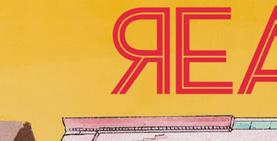
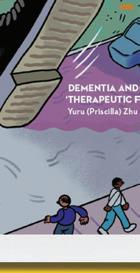













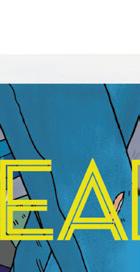



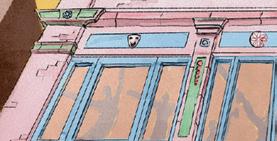












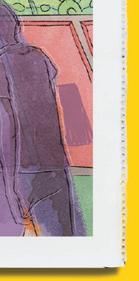


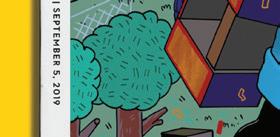

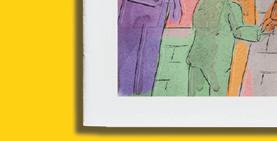
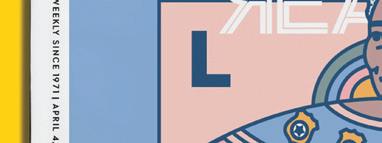







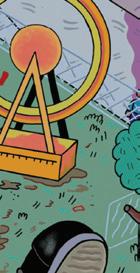

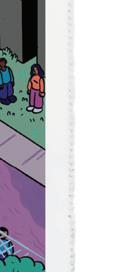




















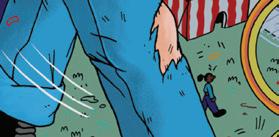






CRIMINAL JUSTICE


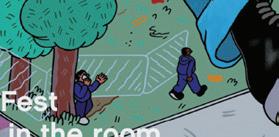




No complaints
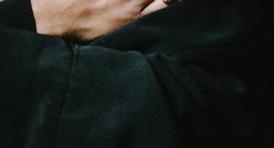
What it’s like to spend 28 years in prison, only to be released into lockdown
By MARI COHEN
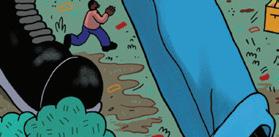
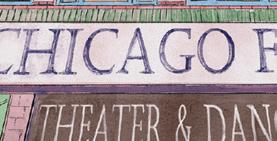

Last month, when Roosevelt Myles was released from prison after 28 years, he held a celebratory gathering at home with close family. His fiancee, Tonya Crowder, cooked fried chicken and french fries for everyone. But as the gathering went on, she became concerned that Myles was talking to everyone but not eating. Did he not like her cooking? Incarcerated for the length of their relationship, he’d never had a chance to try it. No, he told her, he just wanted their first meal home together to be special, just the two of them. So later, after everyone left, Crowder heated up a portion of the food and they ate together at the kitchen table. They’ve done so for dinner every night since.
“We look at each other across the table, and it’s just me and her,” Myles told me, sitting at that same round glass table. “It’s so much love.” Around the kitchen, shiny, colorful garlands still hung from his release celebration—he and Crowder had been so busy, zipping around town to see friends and family and run errands, that they hadn’t had a chance to take them down.
It’s the same table where, about a year ago, Crowder emotionally described the toll of waiting for Myles’s release. He was arrested on Chicago’s west side in 1992 for the murder of Shaharian Brandon and convicted in 1996, but his conviction primarily rested on a witness who changed her story multiple times and who now says she was coerced into framing Myles by a cop frequently accused of misconduct. (Myles says that o cer, Anthony Wojcik, also beat him after his arrest.) In 2000, the Illinois Appellate Court ruled that Myles deserved a hearing on his wrongful conviction claim because his original trial attorney failed to present his alibi witnesses. But due to a series of negligent lawyers and structural problems in the public defender’s office—and lack of intervention from the

judge assigned to the case—years and years went by, and he never got his hearing.
In 2012, Myles’s sister introduced him to Crowder. She became convinced of his innocence and, in addition to becoming his fiancee, became a crusader for his cause, supporting his e orts to get attention from advocates on the outside. In 2017, Myles finally secured pro bono representation from civil rights lawyer Jennifer Bonjean, who has won several wrongful conviction battles in Cook County. Still, by last summer, Crowder said, she had to learn to stop getting her hopes up about potential release dates, since she’d been crushed too many times before, like in February 2019, when Cook County associate judge Dennis J. Porter shocked Myles by denying him the hearing he’d waited so long for.
The Illinois Appellate Court overturned Porter’s decision this past May, fi nding that Porter had improperly dismissed Myles’s new evidence, including testimonies from a man who says he was with Myles at the time of the crime, and from the original eyewitness, who has now recanted. Bonjean said the ruling “gets the job done,” though she disagrees with some of how the appellate court responded to Myles’s claims—including the fact that they didn’t address the long delay because, they said, Myles would have needed to present the transcript from every brief court date in the 20 years his case was pending. Bonjean said this would have been nearly impossible given that many of those court reporters are likely no longer working.
The Cook County State’s Attorney’s O ce has declined to appeal the decision to the Illinois Supreme Court, so it’s likely that further proceedings will happen in the fall. One of Bonjean’s first orders of business will be to file a substitution of judge motion to remove Porter, who has presided over the case since the 90s, because, she told me, “there have

10 CHICAGO READER - AUGUST 6, 2020 ll
Providing arts coverage in Chicago since 1971. www.chicagoreader.com
NEWS & POLITICS


been extrajudicial matters that lead me to believe that he is incapable of presiding over the matter fairly.” In the meantime, as court matters churned on, Myles completed his entire sentence, with the help of a new law that allowed certain inmates to shave time o with the completion of professional and educational programs.
Myles still wants his name fully cleared, and Bonjean said it’s a “travesty of justice” that he’s completed his entire sentence before having the hearing the appellate court fi rst ordered in 2000. Still, at least he’s now waiting at home. The next time Myles enters the courtroom to face Porter or another judge, he’ll walk in freely, with his family, rather than in handcuffs. In the meantime, he and Crowder get to begin the home life they’ve long been waiting for.
So far, that life has included lots of reconnecting with family and friends: visits with siblings, nieces and nephews, and Crowder’s children; a chance encounter at the barbershop with someone he knew before incarceration; meeting his grandniece for the first time. Rather than having to wait for him to call from the prison’s pricey phone system, family and friends are now constantly calling and FaceTiming his new smartphone. His sister was waiting for Myles’s release to bury the urns of their parents, who died waiting for him to win his fight for release, and he got a chance to view the urns in her home. “I couldn’t bear to look long,” he said.
Myles already has a job lined up to work as a new executive board member for the Evans Exoneration project, where he’ll also do paralegal work reviewing innocence claims, and a Peoria reentry organization called Jobs Partnership has also secured a job for him in local industry. With enough money coming in, he hopes he and Crowder will soon be able to buy a house in the area. He’s especially interested in giving back to the community with his work, he says. Watching the Black Lives Matter uprising from prison, he connected his own experience with Chicago police abuse to the ongoing national struggle against police brutality. “I myself was murdered by the police, but allowed to walk among the living dead, in prison for a crime I had no knowledge of, 28 years of my life have been buried,” he wrote in a letter from prison in June, titled “We can’t breathe.”
There have been challenges readjusting after 28 years inside, of course. The clothes that Myles’s family bought for his release
no longer fit because he lost so much weight during his last few months inside due to anxiety about the pandemic, during which inmates were placed in continued lockdown without much information about what was going on. Myles has to learn from scratch how to use a smartphone and a computer. He’s relearning how to drive and has never pumped gas—before he went into prison, attendants still did it for you. He’s already learning about the stigma that comes with having served nearly 30 years of time—for example, a bank clerk treated him with suspicion when he explained why he hadn’t had an account in years. As a condition of his release, he has to wear an electronic monitoring bracelet, which requires him to be in the house before 10 AM and after 10 PM for 90 days, though the term might be cut short with good compliance. And, of course, he’s finally emerging into a pandemic-stricken world, with many of the gatherings and outings he might have hoped for upon release unavailable.
But Myles is confident he’ll brush off most of these obstacles, and he’s happier than he’s been in a long time: “I have no complaints whatsoever.” And some things haven’t changed. Outside, in Peoria, where Myles lived briefly before he was arrested in Chicago, it still smells like the Archer Daniels Midland corn processing plant, just like it did in the 1980s. Myles has enjoyed sitting on the porch, taking in the scenery, the smell bringing back memories: “I know people are driving by and saying, ‘Why is this guy just sitting on his porch?’ If y’all had been through what I’ve been through, you’d be sitting right next to me.”
And he and Crowder are easing smoothly into life together, talking about everything, sometimes in the middle of the night, since their days are so full. He’s only been out of the house without her once; when they’re apart just for a bit, he misses her. “I’ve been away from her too long,” he said. “She sacrifi ced a whole lot for me.” Sitting together at the table, they did their usual gentle ribbing—making fun of each other’s mishaps, or sparring, with laughter, over how much space they’ll each get in the closet. “We may not always see eye to eye, but that’s my best friend,” Myles said. “And that’s how best friends are supposed to be,” Crowder chimed in. v
Chicago Cooks at Home and drinks!
The Chicago Reader, like so many food and beverage professionals, is facing a devastating blow to our finances during this COVID-19 crisis. In response, we teamed up with the city’s best chefs and bartenders to give you their stay-at-home staples. Fi een percent of the profits will go to the Comp Tab Relief Fund, a project created to provide financial assistance to any and all service workers who need it.
AUGUST 6, 2020 - CHICAGO READER 11
@maricohen95 :
^
chicagoreader.com/recipebook $30 PDF download $55 printed copy + PDF

12 CHICAGO READER - AUGUST 6, 2020 ll EVAN F. MOORE
This land is my land
For generations, my family has owned a piece of untold Black history in Boley, Oklahoma. This year, I finally got to see it.
By EVAN F. MOORE
The land my family owns is in Boley, Oklahoma. Boley is one of the more than 50 towns in the state where Creek Native Americans and the descendants of formerly enslaved Black people, called “Creek Freedmen,” found unoccupied land after the Muskogee Cimeter, a Black newspaper, posted an advertisement: “Thousands of our native people are land holders, and have thousands of acres of rich lands to rent and lease. We prefer to rent and lease our lands to colored people. Our terms will be found reasonable.”
Today only 13 of these towns still exist.
Post-Reconstruction and before Oklahoma attained statehood in 1907, the land was slated to become an all-Black state. But then the Oklahoma Land Run of 1889 happened. Black folks were told they could claim land as their own, only to have white people seize that land. These white folks were called “Sooners” because they grabbed land before the o cial start of the run. Now, Oklahoma is nicknamed the Sooner State and the University of Oklahoma’s sports teams are known as the Sooners. The school’s fight song is “Boomer Sooner.”
“That [land run] was the boom, but some people came before it. That’s the Sooner,” said Suzette Chang, an anthropologist, a University of Oklahoma graduate, and the executive director of the Guthrie Public Library. “However, over the decades, centuries, Boomer Sooner has taken on its own identity, and it’s associated with sports, and it’s associated with so many other things that don’t necessarily speak to what actually happened.”
Chang told me that African Americans were encouraged to come to Oklahoma, and not just because it was sold as a “mecca” by Edward McCabe, a Black politician and land agent. “It was also a wiser choice to get away from their slave owners,” she said. “If I’m your property today and then tomorrow I’m not, and you’re my slave owner, most likely you’re not going to be too happy with me because my free labor to you is no longer an option.” She continued.
“When African Americans came here, there was nothing. There was no infrastructure. Nothing. Most, if not all of them, started from scratch.”
My dad is 80 years old. Elijah Moore III’s a hybrid of James Evans from Good Times and That ’70s Show’s Red Forman. This is a man who found a prom date for my sister after her boyfriend contracted chicken pox, a man who kicked me out of his car to walk home after my grades slipped. These days, he likes to trick o his bread at the Indiana casinos and buy chocolate milk and popcorn for his granddaughter. He has been telling me about “the land we own in Oklahoma” for as long as I can remember. He never said much else about it, only that he remembered being there to visit family and that he hadn’t seen it since he was an eight-year-old. This land, he would tell me, was my land.
From what my dad said, the land itself isn’t worth that much today. We paid the property taxes, which averaged only $4 a year. (Screw you, Cook County.) Ten years ago, I took over the payments from my dad and mailed the checks. The property is still in my great-grandparents’ names, Elijah Moore Sr. and Sarah Moore, even though they died decades ago. My paternal grandparents were born in Arkansas, spent some time in Oklahoma, then moved to Memphis for work, where my dad was born. When he was still young, they moved to Chicago like a lot of Black folks who left the south for jobs in the north. (Some of these folks went to other southern states, Mexico, Canada, and, in some cases, Africa.) My grandfather worked as a dining car waiter for the Illinois Central Railroad company, while my grandmother was a cashier at Wesley Memorial Hospital, which is now Northwestern Memorial Hospital.
My maternal grandfather, Augustus Johnson, lost his job at the Memphis Furniture factory and found employment at the Nabisco factory in Marquette Park in Chicago. Then he sent for my grandmother, Vernita Johnson, who got a gig at the factory, and my mom and her brothers and sisters. They lived in the
basement apartment of a family member’s west-side six-flat. My parents met in a hallway of Chicago Teachers College (now Chicago State University) in 1969. It was raining, and she asked some men for change to use the pay phone. My dad o ered her a ride home.
We technically still own the land, but if a family lives next to it, they could claim it as their own. In Oklahoma, this is called adverse possession, “a doctrine under which a person in possession of land owned by someone else may acquire valid title to it, so long as certain common law requirements are met.” In Chicago, we call that squatter’s rights. If someone has been living on the land, they have a legal right to claim it as their own. Also, this means any living descendant has a claim.
I thought about that land often. What does it look like? Does someone live there? Why had I never gone down there, to this literal piece of Black History? Earlier this year, I called the Okfuskee County clerk’s office to get more information about the property. They were as nice as they could possibly be. I knew that technology was going to be an issue since this is rural Oklahoma and not the Cook County Clerk system here in Chicago. They told me they couldn’t change my ancestors’ names on the property taxes; the best they could do was put in a line saying “c/o Evan F. Moore.” They mailed me a map of the property. The 50-footby-140-foot land looked like a plot behind someone’s backyard.
This Black History Month, back when it was normal to travel between states, before the pandemic ripped through the nation and interrupted everyone’s plans indefinitely, I decided to take a trip to Boley and see the land myself.
My parents are retired educators, and this trip reminded me of the summer road trips we took to southern states like Tennessee, Missouri, and Arkansas to see family. I asked my dad to come with me, because for as long as he’s talked about the land, I thought he ought to see it again. He resisted at first, and said it was
so long ago that he was there. I told him that I wanted to tell my daughter, his grandbaby, the same stories about Boley he told me as a kid.
The Moore men got on a plane and went to Oklahoma. We flew from Midway to St. Louis and then to Tulsa. We weren’t the only Black people on the flight: there was a connecting flight to New Orleans for Mardi Gras.
Before we drove the 64 miles southwest to Boley in our rental car, we stopped at a monument to one of the most violent racial incidents in American history. Growing up, I had heard a lot about Tulsa’s “Black Wall Street,” what was once known as the wealthiest Black community in the nation, made up of doctors, attorneys, and business owners. Tulsa’s Greenwood Avenue was a self-contained area—shops, restaurants, grocery stores, hotels, jewelry and clothing stores owned by and created for Black folks.
Between May 31 and June 1 of 1921, white mobs destroyed the 35 blocks. Hundreds of Black folks were murdered and homes were destroyed. In a 2001 report, the Oklahoma Commission to Study the Tulsa Race Riot of 1921 estimated that up to 300 people died in the massacre. And survivors were left homeless. The report opens with a sobering excerpt from an article published in the Tulsa Daily World the day after the massacre: “Personal belongings and household goods had been removed from many homes and piled in the streets. On the steps of the few houses that remained sat feeble and gray Negro men and women and occasionally a small child. The look in their eyes was one of dejection and supplication. Judging from their attitude, it was not of material consequence to them whether they lived or died. Harmless themselves, they apparently could not conceive the brutality and fiendishness of men who would deliberately set fire to the homes of their friends and neighbors and just as deliberately shoot them down in their tracks.”
AUGUST 6, 2020 - CHICAGO READER 13
The catalyst for the massacre was an alleged sexual assault of a white woman, Sarah Page, by a Black man, Dick Rowland. Some townspeople say the two were in a relationship, others say he may have tripped in an elevator and grabbed onto her arm. An angry white mob stormed the courthouse to demand that the local police turn over Rowland.
More likely than not, you haven’t heard of what happened in Tulsa in 1921. I went to majority Black schools in Chicago and had never heard much about the destruction of Black Wall Street until it was shown in graphic detail on the 2019 HBO series Watchmen. The series, a compelling watch, got one thing right: the chilling violence. History is often treated like a hot bar at a supermarket; take what you want while leaving what you don’t behind. And, depending on who you talk to in Tulsa, some locals call it a riot. Black folks call it a massacre.
“They called it a massacre because people were killed,” Cleo Harris Jr., the owner of a Black Wall Street souvenir shop on Greenwood Avenue, told me. After walking around the monument, my dad and I stopped by. Most of the items—T-shirts, magnets, hoodies, postcards, and shot glasses—had “1921” on them in honor of the massacre. My dad bought a cap for himself and a T-shirt for his granddaughter. We chopped it up with the sta and other folks in the store. “The insurance company deemed it a
‘race riot’ because they didn’t want to pay out the insurance claims to the Black people who lost homes and businesses. That’s a reason people left. They couldn’t a ord to rebuild.”
A plaque at the Black Wall Street monument says the unpaid financial claims are about $2.7 million. Earlier this year, 99 years after the massacre, Oklahoma’s school system announced that the Tulsa massacre will be included in the state school curriculum.
Imagine being so angry. Imagine being so angry that you do something that wipes out generations of Black folks who were minding their own business. Imagine growing up a Black Oklahoman and hearing about the horrors of the massacre from the old heads, and not learning about it in school. Imagine white supremacy and our educational system forming like Voltron to orchestrate the greatest trick bag in American history. Imagine watching Watchmen, Googling “Tulsa Race Riot,” and thinking Whoa, what the fuck? Why have I never heard about this?
We couldn’t have known it then, of course, but in a few months from that day in February, the president would kick off his reelection campaign in Tulsa on the weekend of Juneteenth, a holiday celebrating the emancipation of enslaved African descendants. Tulsa’s Black residents, utilizing scorched earth, would tell the vice president to stay away from Green-
wood Avenue and would cover the monument with blue tarp. Standing next to my dad back in February, I thought about the money owed to the Black business owners.
The pain and the anger those people felt as their Black lives were snu ed out.
The survivors whose lives were torn apart. So many names.
Damn shame.
Boley was founded in 1903. Once a selfsu cient town that reveled in cooperative economics, it had its own power plant, grocery stores, hotels, a jewelry store, department stores, a water system, an ice plant, two colleges (Creek-Seminole College and Methodist Episcopal College), two banks, and a newspaper, the Boley Progress. The town had the distinction of housing the first Black-owned bank to receive its own charter, along with the first Black-owned telephone and electric companies. Boley was dubbed a “social success” and its business district is designated as a National Historic Landmark.
Not bad for a town that was the brainchild of two white men, railroad o cials J.B. Boley and Lake Moore, who thought it was time to show that Black people could govern themselves. Many Black folks had to figure out their next move on their own just decades after emancipation, and it seems like white people didn’t
expect much from us at this time in history. Folklore says Boley and the other Black towns were created as a bet, like the Duke Brothers did to Eddie Murphy’s character in the film Trading Places.
“There were bets that they wouldn’t make it, they wouldn’t survive,” said Chang, who is also an Oklahoma Humanities board member. “They lacked the intellect and the ability to be self-sustaining. I believe that all of the sundown towns that surrounded them were purposely put there to ensure that they could not go further than what they were able to obtain—which was a lot.” Sundown towns were places where Black people had to leave town before nightfall.
According to James W. Loewen’s Sundown Towns: A Hidden Dimension of American Racism, the name of the Illinois town Anna was an acronym for who wasn’t allowed.
In 1905, Booker T. Washington, the founder of Tuskegee Institute, visited Boley, which then had a population of 4,000 and the tallest building from Oklahoma City to Okmulgee. He loved what he saw: Black folks governing themselves in a utopia free of racism, “the most enterprising and in many ways the most interesting of the Negro towns in the United States.” In a January 1908 issue of The Outlook, a Christian weekly magazine, which featured an excerpt of his autobiography Up From Slavery, Washington wrote a glowing review of Boley. In the section “Boley: A Negro Town in the American West,” Washington wrote: “Boley, like the other negro towns that have sprung up in other parts of the country, represents a dawning race consciousness, a wholesome desire to do something to make the race respected; something which shall demonstrate the right of the negro, not merely as an individual, but as a race, to have a worthy and permanent place in the civilization that the American people are creating. In short, Boley is another chapter in the long struggle of the negro for moral, industrial, and political freedom.”
Michael Harriot, a writer at the Root, has a great Twitter thread on the history of Black towns in Oklahoma. Here, he describes Boley residents: “Now you gotta remember, these weren’t ordinary black folks. These were people who essentially LIVED in the Wild West. They herded cattle. They fought off white lynch mobs. They were REAL Black Cowboys so everyone knew not to fuck with those niggas in Boley. They didn’t play.”
Harriot’s deep cut into Boley’s history of Black folks living independent of white people is often the unfortunate impetus of historically misguided talking points and bad-faith arguments spewed by Black Republicans who, in some cases, are weaponized as attack dogs

14 CHICAGO READER - AUGUST 6, 2020 ll
“I was here as a kid,” said Elijah Moore III. “The land looks just like I remember it.” EVAN F. MOORE
against Black communities at the behest of the far right. (For further clarification, see Burgess Owens, Sheriff David Clarke, Jason Whitlock, Diamond and Silk, and Candace Owens.)
Today, the town is mostly known for a November 1932 attempted bank robbery by members of Charles “Pretty Boy” Floyd’s gang. Floyd reportedly warned his gang not to rob the Black Farmers & Merchants Bank because the townspeople were armed. It didn’t work out for Floyd’s gang. The townspeople murdered some of them and recovered the money. Of course, there’s a movie in the works about the failed bank robbery.
Longtime WMAQ-TV Channel 5 weatherman Jim Tilmon, one of the first Black American Airlines commercial pilots in the 60s, grew up in Boley. Tilmon’s grandfather, Bill Hazel, was a grocery store owner and the superintendent of the nearby State Training School for Incorrigible Negro Boys (it would become the John H. Lilley Correctional Center). “[Boley] was a self-sufficient town in terms of structure, politics, services, and their communications. Their telephone service . . . at that time [was] pretty primitive but that was true with a lot of towns,” Tilmon told me. “My family lived on the property out there for quite some time and had a very, very nice place. So my grandfather was very successful in those days by those standards. It was interesting being there as a Black person because of the kind of sophistication this little town had, its features and its politics and everything else. Amazing when you think about it.”
As with many small American towns, the departure of industry hurt Boley. When railroad companies failed, and local farming declined as a result, Boley lost its luster and never recovered. As of 2018, Boley’s population was estimated to be 1,176, according to the United States Census Bureau. But the town still hosts the Boley Rodeo & BBQ Festival on Memorial Day weekend, one of America’s oldest African American community-based rodeos, featuring bareback riding, steer wrestling, team roping, and bull riding.
Dad and I drove from Tulsa to the Okfuskee County clerk’s office in Okemah to check out any records of the property. Okemah is six miles away from the site of a May 1911 lynching where Laura Nelson and her 13-year-old son Lawrence were hung from a bridge after a dispute over a missing cow. A photo of Nelson’s prone body, which was made into a postcard at the time, is known as the only surviving documentation of the lynching of a Black woman.
Town folklore says that the placing of the Nelson bodies was a warning to Boley and
Oklahoma’s other Black towns of what might happen if they were to upset the natural order. One of the men who was allegedly involved in the lynching, as an observer or as a participant, was Charles Guthrie, an Okemah businessman who went on to join the Ku Klux Klan. Guthrie’s last name might sound familiar; he’s the father of famed Oklahoma singer-songwriter Woody Guthrie, whose hit song “This Land Is Your Land” is used in many protest records.
In the clerk’s archive room, we had to dig through property records, handwritten records dating all the way back to statehood, in old, dusty books. Picture Game of Thrones’s Sam-
me of certain parts of Chicago, especially on the south, east, and west sides. There’s an abundance of vacant lots and neglected homes in once-thriving areas that were intentionally divested once an industry left and when people moved away. It seemed as though the descendants of the townspeople had moved away and left their property behind, like my great-grandparents. But a small and proud group remained, and kept the town afloat for as long as they could.
This being the rural south, not Chicago, where people have addresses in front of their homes, we pulled up to the wrong house. When
welcomed us in and walked us to the back of his house. The map in my hand, I measured the lines on paper against the physical property line. Then I finally looked up. There it was.
The land was beautiful, a picturesque slice of the south, without the baggage of history. I fixed my eyes on the trees and dirt that I had heard so much about. I watched my dad as he looked on. This was his moment more than mine. The last time he was in Boley was in 1948, when he was only eight years old. “A lot of memories came back,” he told me. “I was here as a kid. The land looks just like I remember it.”
“I never knew whose land it was,” McCarrol told me. He seemed aware of his place in my family’s history. “I would let my horses ride around back there. If y’all would’ve shown up sooner, you would’ve gotten a show.”
We spoke with Mr. McCarrol for a bit. We took photos, walked around his yard, and filmed footage of the chicken coop he had in his backyard. And, most importantly, I told him we would stay in touch. I’m going to send him a copy of this story.
On the drive back to Tulsa, we noticed a dilapidated building with a “Make America Great Again” campaign sign displayed in front.
The story of Black America can’t be told without acknowledging the erasure of life and property through slavery, robbery, poorly kept records, and systemic racism. It’s something that looms large for a lot of Black folks.

well Tarly searching for records at the Citadel. It turns out that my great-grandfather Elijah Moore and my great-aunt Jettie Mae Jackson bought the land for $100 in July of 1959. Before that, the land changed hands a few times due to the nonpayment of property taxes. The clerk’s office gave us another map, which showed a house with a backyard, and the name of the man who owns the home that sits in front of the property.
With this information, we drove to the part of town where my family property was. The first thing I noticed was how desolate it was. I didn’t see many businesses outside of the gas station and the Lilley Correctional Center. We drove by abandoned homes, abandoned community centers, an abandoned high school, and an abandoned Masonic lodge. It reminded
we spotted what was likely the small one-story house we were looking for, I parked and got out of the car. I had wondered how me and dad, two Black men in the south, would be received. It was raining and I told my dad to stay in the car. He didn’t.
As we walked up to the house, Richard McCarrol met us at the door. He was a tall Black man with a slender build and round eyes who had been living there since the early 90s. I told him who we were and why we were there. He was floored. I mean, two random guys from Chicago show up on a wet and gray Monday afternoon saying they own the property behind your house. That’s a story to tell.
McCarrol said he was a retired construction worker, a cowboy in his spare time, and someone who outlived two of his wives. He
Those three February days gave my family something most of us rarely receive in terms of our ancestry: a semblance of closure. In that moment in Boley, and even now as I write this, I think about what exactly it took for my great-grandfather and great-aunt to have the courage to buy land back then. For me, homeownership is a dream; I’ve been chasing it for some years, and I’m closer than ever to making it a reality. It’s tied into my self-worth as a man; I see homeownership as freedom, maybe the same freedom my family was looking for back then.
I’m not sure what I’ll do with the land in Boley. I intend to not make my first visit my last. I want my daughter to see the land, to see where she’s from. I want to leave something for her as my parents plan to leave something for me and my sister. We Black folks think about our past while preparing our families for a future without us. As a Boley native who was in the Black Wall Street souvenir shop reminded me, “This is your history. It’s your legacy.” v
AUGUST 6, 2020 - CHICAGO READER 15
@evanFmoore
Evan F. Moore is a culture/entertainment writer with the Chicago Sun-Times.
The unpaid fi nancial claims of the massacre are about $2.7 million. EVAN F. MOORE
ARTS & CULTURE
Charna Halpern and Del Close founded iO (then called ImprovOlympic) in 1981.
 COURTESY IO
COURTESY IO
And how did the people who had been working at iO right up to the shutdown, the performers and box o ce personnel, the waiters and bartenders and cooks, find out?
“They found out from an Instagram post,” Shelby Plummer, former creative director at iO (from 2017 to 2018) tells me. “Everybody on management was under the impression they would reopen.”
“The community is really hurting right now,” Plummer continues, adding that she created a GoFundMe campaign “to help sta members of iO who are struggling. Help them get through a few more months if their unemployment benefits end.”
iO’s closure triggered a deluge of social media comments and articles not just in the Chicago dailies, but across the country, in the New York Times and New York magazine. The closing was at least as cataclysmic as Upright Citizens Brigade (which grew out of iO in the 90s) closing theaters in New York and LA. It may be more cataclysmic, because UCB still exists as an organization (and still owns a space in LA it intends to keep).
U. of C., published a column in the Chicago Tribune that used iO’s closing to try out the latest right-wing echo chamber buzzword (“cancel culture”) and to blame iO’s closing on a group of uppity BIPOC improvisers, making demands in a petition (I Will Not Perform at iO Until the Following Demands Are Met) on a financially strapped Charna in the middle of a pandemic. Cammack incorrectly reported that the petition asked Charna to “step down.”
When I asked Charna if the petition circulated by five BIPOC improvisers played a role in her deciding to close iO, her answer was unambiguous: “No no no no no not at all.”
iO past, present, and nonfuture
By JACK HELBIG
How did you find out about iO closing?
If you are like me, you found out on Facebook. Or maybe it was Twitter, or some other social media platform. I found out when David Razowsky, an iO alum and former artistic director at Second City Los Angeles, shared a Facebook post with the words: “This makes me so sad. I would not be having as full a life as I do now had it not been for ImprovOlympic. This is a huge loss.”
The post was a screenshot of an e-mail Charna Halpern, founder and sole proprietor of iO, sent June 17 to small, up-and-coming BIPOC comedy troupe Free Street Parking. It began as a response to an open letter they had sent her, setting forth ideas for opening up iO to BIPOC performers and writers: “Thanks
for your letter folks. I have always been open and interested in involving my community in change and growth in my theatre. One can’t grow a business this big without doing that.”
But a sentence later Charna abruptly dropped a bomb. “[I]ts not looking like iO will be able to open its doors. The pandemic had made the financial struggle too di cult and I can’t even see the light at the end of the tunnel at this point.”
The moment I read the shared post I sent a DM to Charna: “say it ain’t so, Charna this makes me sad if its true.”
She replied: “Im sad too. This pandemic has killed me and theres no real end in sight for theater.”
There it was. Right there. iO was dead.
Lots of folks weighed in on Twitter, mourning iO, lambasting the organization for its flaws and foibles. Stories circulated about harassment, sexual predation, evidence of racism, some of them outright acts of libel (one post listed by name improv teachers, at iO and elsewhere, who actively attempted to hook up with students). A few snarky criticisms of improv culture and cultish improv teachers appeared for a time under the name Haunted Ghost of Del Close @HauntedDel: “While alive I created a school of improv that acted more like a freaky fraternity than a place of learning. Now I’m in hell.” But sadly, the ghost was silent after a few days of posting in late June and has not posted since.
Others were kinder, defending Charna and iO. Long-time improv teacher and director Michael Gellman posted on Facebook: “Charna kept a di cult to succeed business going in a tough town for years. She ain’t perfect (who is) and she made mistakes along the way but she also helped thousands and kept Del alive and creating for longer than he would have without her.”
And then others tried to capitalize on the closure to advance their own agendas. A young writer, Shaun Cammack, a grad student at the
The five originators of the petition—Olivia Jackson, Daniela Aguilar, Cherish Hicks, Jackie Bustamante, and Tommy Nouansacksy— also repudiated the idea that they were in any way responsible for iO’s closing. In an open letter posted in social media they stated, “This petition was created out of love for our community, specifically the community at iO. That building was a creative home for so many incredible performers, many of whom were not treated with the respect they deserved. We were so looking forward to iO post-pandemic and more importantly, iO post-petition. We really believed that our demands were going to be met and that iO was going to become the warm, inclusive, welcoming place that we thought it could be. We cared about iO and wanted it to be better for us, for our friends, and for folx to come.”
Which is not to say Charna embraced wholeheartedly the ideas in the petition. She told me she had been willing to meet with them, but added that she had no money to hire anyone new, and added that, “This is a pandemic! You are telling me to hire a group of people? I just can’t do that right now! They don’t understand business! They don’t!”
Talking to Charna reminds me that the iO that died last month was a very di erent place than the one I knew back in the late 80s and 90s.
Ifirst met Charna in the early 80s when she and I were both students at Josephine Forsberg’s Players Workshop. It was there she met David Shepherd, who had been touting the idea for years of turning improv into a competitive sport by creating an Olympics of improv, with teams of improvisers competing against each other playing Viola Spolin’s theater games. (An idea successfully launched by Shepherd and his followers in Canada, and by others, under other names, in the U.S.)
16 CHICAGO READER - AUGUST 6, 2020 ll
COMEDY
Remembering the comedy theater’s humble beginnings and reflecting on its dramatic end
Shepherd wanted to do an improv-based show built around the Jonah Complex (which is Abraham Maslow’s term for fear of success), and Charna agreed to work with him on that if they also collaborated on the Olympics of improv.
Shepherd and Halpern eventually parted ways—Shepherd, cofounder of the Compass but not part of the team behind the more successful child of the Compass, the Second City, struggled with his own Jonah Complex. But Halpern was still noodling with Shepherd’s basic idea when she famously met Del Close.
Halpern remade ImprovOlympic around Del Close and the Harold, a kind of longform improvisation conceived and named in the 60s at the Committee in San Francisco.
Charna continued to call it the ImprovOlympic (the International Olympic Committee had not yet forced them to change their name to iO), and it was a scrappy mom-and-pop organization. Maybe “scrappy mom and distracted, emotionally distant dad” organization is a better way to put it, because ImprovOlympic was all about Charna keeping things going and Del showing up for classes (where he served up equal doses of monologuing and inspiration) and standing in back during shows, frequently popping out for a smoke, grumbling under his breath.
Keeping things going back then was what Charna excelled at. Back then iO had no fixed abode. Until they landed their own space on Clark Street, half a block south of Wrigley Field, iO moved a lot. Here is a partial list of the places ImprovOlympic called home between 1981 and 1995: Second City (in a space that later became Second City’s ETC space), Exit (a punk club on Wells up the street from Second City), CrossCurrents, Cotton Club Chicago, Orphans, Kiku’s, At the Tracks, Ciao, Papa Milano, the Wrigleyside.
Just a ragtag group of young improvisers, led by a quirky, energetic woman with a nose for business and a fierce instinct for survival, working with a sometimes brilliant, sometimes just there, chain-smoking, former addict with dozens and dozens of stories of his drug-fueled meetings with various exotic celebrities, which he would reel out in his classes. Former students of his used to tell me about a game they would play where you would improvise a monologue in which you randomly matched a drug with a famous person with an iconic place in history: “I remember taking _____ with ______ at __________.”
As in, “I remember doing mushrooms with
Hugh Romney, aka Wavy Gravy, at a Grateful Dead Concert.” Or, “I remember dropping acid with Timothy Leary and Neal Cassady at Ken Kesey’s Electric Kool-Aid Acid Test.” (Both of these examples are fictional, though likely.)
The iO that died in June was a lot of things—a popular improv school, a theater complex (the building on Kingsbury has four working theater spaces), a celebrity factory (the walls of iO are covered with photos of younger versions of now-famous actors and comedians, Chris Farley, Mike Myers, Tina Fey, Rachel Dratch, Adam McKay, Aidy Bryant, Amy Poehler, Jason Sudeikis among them, posing with their Harold teams), a shrine in a cult built around the memory of Del Close— but it was not a mom-and-pop operation.
In the end iO was a big business with a huge complex on Kinsgbury carved out of a furniture store/warehouse and an industrial bakery. In that iO space are four operating theaters, a huge bar and kitchen, meeting rooms for classes, a beer garden, and a large party room, all of it unusable in a pandemic. iO went from bustling to unsustainable in March.
iO moved into the space on Kingsbury in 2014 after they were forced out of their location on Clark Street in Wrigleyville.
“I wanted to buy the space [on Clark Street],” Charna tells me, “but the landlord [her cousin] said, ‘Honey, I got plans.’ The landlord bought up all of Clark Street. I was making money. I wasn’t paying property taxes. I was very happy. We tried to get landmark status. We got a petition together. My cousin said, ‘Charna, don’t cause me trouble.’”

So she moved the operation to a former industrial district south of North Avenue, west of Halsted.
“The space was massive,” Plummer tells me, “[Charna] went from a two-space theater, with a lot of walk-in tra c, people would go to a game and then after go to a show. I think 70 seats a piece when they were in Wrigleyville. On a weekend it was not hard to sell out the whole theater. In the new space they had two theaters with a capacity of 120, and two with I think 80. They were open every night of the week. And two shows working every night. At the beginning there was no foot tra c. When I started there was no marketing budget. “

That space, and a handful of online classes, are all that are left of iO.
Closing something as big and complicated as iO is a messy business. And there are a lot of loose ends to tie up.
One of the messier loose ends involves the summer intensive, a yearly summer improv camp of sorts for adults. Improvisers from around the world would come to Chicago every summer for an immersion in the world of improv—five weeks of workshops, five days a week, and all of the iO shows in the evening you could stand. The price of the intensive, $1,300, did not include food, lodging, or transportation (all of which was the student’s responsibility).
Montrez Hawkins, an actor and improviser from Atlanta, Georgia, found out about the summer intensive from a friend.
“It sounded like paradise.” Hawkins recalls, “I set my sights on that goal.”
Hawkins, who works in the hospitality industry in Atlanta, started saving up.
“I signed up in February,” Hawkins continues. “Had I known what was about to go down I would have held onto it.”
Hawkins was paying for the intensive in installments. He had only paid $800 to iO when the city shut down.
“I was thinking, I will probably get a refund if they shut down [for the summer],” Hawkins continues. “I didn’t hear anything in March and April. In May, I got a note that said, ‘Just so you know, we are keeping an eye on the situation. The moment we are able to open the business, we will see about giving refunds.’”
Hawkins says he wrote a letter to iO stating in strong terms he wanted his refund. The next day he got a note from iO manager Stacey Malow-Williams “that made no reference” to his letter.
The letter from iO stated that “iO will be closing its doors permanently,” and that “due to the Covid-19 shutdown and the lack of cash flow, we have run out of money.”
iO could not offer a refund, but they were offering virtual classes instead. In another e-mail Hawkins was given an extensive list of online classes to choose from.
Hawkins was enraged. “They were not giving us the option [for a refund].”
So Hawkins posted the following online: “I worked my ass o to pay for that Intensive @ iochicago. I sacrificed so much. I turned down taking improv classes before quarantine to make sure I can make it there. I turned down improv and scripted shows so I can work my shitty serving job on weekends for 14 hours. You think online improv classes are worth $1,000??? IT’S NOT.”
Hawkins’s posting was reposted by others, and was part of the social media firestorm that
ARTS & CULTURE
flared up after iO closed.
Hawkins isn’t sure how many others are in the same boat. He says there were 35 members of a group on Slack created around the summer intensive; at least one student had planned to come to Chicago from Europe to study at iO.
Hawkins’s initial posting was in late June. I e-mailed Hawkins in late July to see if he had heard anything from iO.
His reply: “Nope. Not one drop of news. No statement about alternatives to online classes or anything. The last email I got is the one I forwarded to you about availability for online classes.”
When asked about the summer intensive, Charna sighs in frustration, “It’s a lot of money. I have to find a way to pay them back. It is not going to happen right away. But I have to find a way to pay them back. I am hoping that comes from the sale of the building. The online classes are not going to work out.
“I have no income. But the bills keep coming. I am supporting the theater out of my own pocket. I am 68. People kept saying, ‘When are you going to retire?’ Now it is time. We are in a pandemic and we don’t know how long it will be. No one knows. I’m retiring. I am retiring from the biz. I am 68 years old. I am ready to retire from the biz and stop the stress. I had a good long run, I had a 40-year run. There are a lot of young people. They can pick up the ball and take it from here.” v
AUGUST 6, 2020 - CHICAGO READER 17
Don’t miss an issue Get the Next 12 Weeks of the Chicago Reader Delivered to Your Home CHICAGO’S WEEKLY SINCE MARCH 2020 STAY AT HOME chicagoreader.com/support
@JackHelbig
Semicolon Bookstore is a community, on and o ine
The Black-owned bookstore thrives as a community-oriented business.
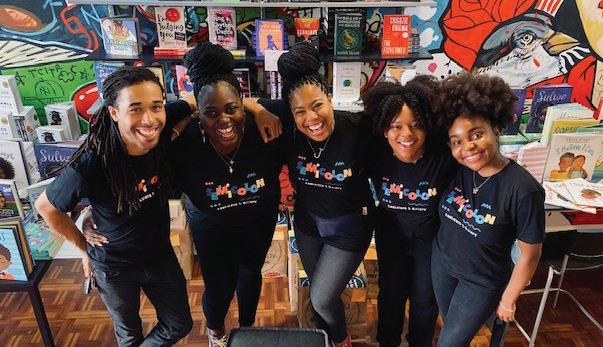 By RIMA PARIKH
By RIMA PARIKH
One day in April 2019, DL Mullen was wandering around Halsted and Grand. Right before then, she had just left another project that she was trying to get off the ground, Athenaeum Librarium, which was supposed to be like a Soho House for book lovers. From construction delays to the building flooding, things kept going wrong, and Mullen knew that she’d have to put it on hold. Her dream of founding a luxurious membership club, library, and coworking space would have to wait, even after partnering with tech giants like Google. Then she walked past a retail space for lease. She didn’t have an interest in opening a retail space, but figured she’d inquire anyway. She made a call. The landlord arrived within 30 minutes. By the time she went home that day,
the place was hers.
“I had no clue what I was actually going to do with the space,” says Mullen, an entrepreneur with a PhD in literary theory. “I just started knocking down walls and painting, and then I was like, ‘Well, I’m just going to put my favorite things in here and we’ll see what happens.’” And that turned into Semicolon Bookstore, the city’s only Black woman-owned bookstore.
Semicolon opened a year ago, in July 2019, and while Mullen wishes there could’ve been more pizzazz for the anniversary, it’s an important milestone nonetheless. “Thank goodness [Athenaeum] didn’t work, because I would be broke by now,” she laughs. During the pandemic, she’s thrown herself
into her work to make it so that it’s not just surviving, but thriving as a communityoriented business.
Pre-pandemic, Semicolon doubled as an art gallery, with an artist-in-residence taking over the downstairs exhibition space for two months at a time, and Mullen and her team coordinating books to go along with it. One example was early this year, when Semicolon hosted photographer W.D. Floyd for an exhibit called “The Joy: The Visibility of Black Boy Childhood,” coordinating it with books that fit the exhibit (like Ralph Ellison’s Invisible Man). Curating the books and art together flowed easily for Mullen. “Art creates the same feeling and emotional interest that words do.” She noticed that Semicolon had two types of customers: those who stopped in for the art and stayed for the books, and those who came for the books and ended up falling in love with the art. Artists would give talks about their work, and Mullen would encourage them to hang out in the space. That meshing of art and books encouraged customers to spend more time in the space, developing its own community.
Semicolon has reopened with caution; despite bookselling being a hands-on activity, they’ve been enforcing social distancing and keeping the store extra clean. “If it means con-
sistently having a line outside, that’s perfectly fine,” she says. “Whatever feels safe. And people are so happy to be in a bookstore.”
Maintaining Semicolon as a community space has been a new challenge during the pandemic, but it’s not an impossible one. Mullen isn’t a fan of virtual events, so the regular artist talks and author discussions have been on hold. “It just doesn’t feel the same to have a bunch of faces on a Zoom call, versus people in person when you can actually feel that energy.” But the store has still stayed connected to its mission of focusing on the community through initiatives like #ClearTheShelves, in which Mullen set up a GoFundMe to collect donations to give books, Target gift cards, and cash to CPS students in order to “level the literary playing field as much as possible.” The store’s been connecting with its social media following and focusing on online sales on bookshop.org, which have been “transformative” in ensuring the business’s survival through the pandemic, especially after gaining new customers in the last couple of months.
During the national movement against police brutality sparked by the death of George Floyd, many non-Black Americans headed virtually to Black-owned bookstores to purchase books on anti-racism. Semicolon, like other Black-owned bookstores, dealt with delays and backorders. In turn, many Black booksellers received hateful messages, rude e-mails, and complaints from the very people who were allegedly immersing themselves into anti-racist learning.
But the national news headlines told a different story, framing the problem to seem like a deficiency of Black-owned bookstores: that they couldn’t “handle” the orders, rather than detailing the supply chain slog that contributes to the delays, and the irony of the fact that the vitriol that was coming from people who were supposedly “working on themselves.”
Mullen tweeted her frustration with the headlines through the Semicolon account. The exasperation was compounded by the fact that she didn’t see journalists explaining how the book supply chain worked: if a book was backordered, it meant that publishers not only had to reprint, but they had to factor the reprints into their existing print schedule, resulting in delays. “A lot of people were buying the same anti-racist titles—none of which were new, by the way—they’d been out for years. So by this point, there was no need to have a billion
18 CHICAGO READER - AUGUST 6, 2020 ll
ARTS & CULTURE
LIT
Semicolon owner DL Mullen (second from le ) with her staff COURTESY DL MULLEN
copies of them on hand,” Mullen explains. “So the mess that was created looked like, ‘Oh, it’s taking three weeks to get my order,’ when the reason why it’s taking three to six weeks to get your order is because this book doesn’t currently exist in its physical form anywhere, because they’ve all been purchased. Bookstores have absolutely no issue fulfilling orders, so long as the book exists.”
Mullen curates author events to what’s of interest to her customers, including moderators, who she scouts for by perusing the #bookstagrammers hashtag on Instagram. “We can’t just do like the popular book and the popular author because it’s likely not that popular with the Black community.” When Margaret Atwood’s The Testaments came out, she remembers people lining up at other booksellers, but at Semicolon, it didn’t sell. “It’s a little more e ort that’s put into things instead of just picking an author of a popular book and having them come sign.”






Mullen is the third Black woman to own a bookstore in Chicago, after Desiree Sanders and Toneal M. Jackson, and currently is the only one. A year into owning Semicolon, Mullen has realized that being a Black bookseller has more pressure and responsibility attached than she originally anticipated. “Black booksellers are a lot different—they have what seems to be a different kind of focus. I think naturally Black booksellers are going to be more focused on the community than the dollars and cents. I also recognize that Black bookselling is a di erent beast. We’re just making our own way,” she says. “When I started it was kind of, of course I’m going to do community work if anybody comes in, but otherwise, I just want to have a good time. As we’ve been open, I’m recognizing how necessary it is that we are here, and the responsibility that we have to our community, and to the families and the kids who need us to stay here.”
In the future, Mullen hopes to expand Semicolon to other cities with strong graffiti art scenes, like Los Angeles or Washington, D.C. She also hopes to retain the new customers that they’ve gained in the past few months. Her customers before were 80 percent Black. Now, her customers are split 50/50 between Black and non-Black. Mullen says, “I think when people hear about a Black-owned space naturally non-Black people are kind of timid about coming. And once non-Black people come into the space, they feel surprisingly comfortable and I’m like, ‘Yeah! Just come in.’” v
A biweekly series curated by the Chicago Reader and sponsored by the Poetry Foundation. This week’s poem is curated by poet Tara Betts. Tara Betts is the author of two poetry collections, Break the Habit, Arc & Hue, and the forthcoming Refuse to Disapp Disappear. She also co-edited The Beiging of America and edited a critical edition of Philippa Duke Schuyler's Adventures in Black and White. In addition to her work as a teaching artist and mentor for young poets, she's taught at prisons and several universities, including Rutgers University and Uni and University of Illinois-Chicago. In 2019, Tara published a poem celebrating Illinois' bicentennial with Candor Arts. Tara is the Poetry Editor at The Langston Hughes Review and the Lit Editor at Newcity.
Betts is currently hard at work to establish The Whirlwind Center on Chi Chicago's South Side.
Foundation 61 West Superior Street poetryfoundation.org
AUGUST 6, 2020 - CHICAGO READER 19
@rimaparikh12
ARTS & CULTURE
Poetry
Kathleen Rooney’s love letter to pigeons
The historical novel Cher Ami and Major Whittlesey gives the misunderstood creatures their due.
By TAYLOR MOORE
Before pigeons were condemned by modern sensibilities as “rats with wings,” they were the unsung foot soldiers of human communication and warfare. Julius Caesar conquered Gaul using pigeons as his emissaries during invasions. Mongol emperor Genghis Khan established pigeon posts across the empire to bridge the vast distances between Asia and eastern Europe.
“Nowadays, people are so down on pigeons,” says Kathleen Rooney, writer, DePaul University English professor, and known pigeon enthusiast. What some may consider dirty or invasive vermin, Rooney finds endearing and worthy of admiration.

“I’ve always loved pigeons, ever since I was a kid. I think it’s because I associate them with cities. As someone who grew up in smaller towns and the suburbs, and never really felt
like I belonged in those places . . . anytime I saw a pigeon, I knew I was in a place that I would want to live someday.”
To give these misunderstood avians their proper due, Rooney wrote them a 336-page love letter.
Cher Ami and Major Whittlesey (Penguin Books), Rooney’s fourth novel, soars as a fictionalized account of a major WWI battle, the Meuse-Argonne o ensive, in which American forces were trapped behind enemy lines in France and su ered friendly fire. It’s not your typical war novel—half the story is narrated by the real-life British-born homing pigeon, Cher Ami, whose message saved the lives of 194 American soldiers, known as the Lost Battalion.
Cher Ami tells her story 100 years later as a taxidermied specimen at the National
Museum of American History’s “Price of Freedom” exhibit. Wry and perceptive, the bird vividly details her upbringing as a racing pigeon, her anguish at the brutality of war, and her brief but critical relationship with the alternate narrator Major Charles Whittlesey, a Harvard-educated lawyer whose leadership during the battle earns him an uneasy status as a war hero.
“The default assumption among many readers is that if something is about animals or has talking animals, it has to be for kids,” Rooney says. The idea of writing from a pigeon’s perspective emerged early on, but she wanted to avoid kitschiness in favor of creating a real, if anthropomorphized, character. “I love fiction as a genre for the way it lets the writer, and eventually the reader, hop across the barrier that is our bodies, and live in the hearts and minds of a di erent embodied person.”
One of the central tensions that both Cher Ami and Major Whittlesey contend with is the meaningless violence and despair of war—and how being propped up as a hero can be a form of propagandist exploitation. “Our need to fly home pushes through all other concerns—including self-preservation, thus our usefulness on the battlefield,” Cher Ami says in the novel. “It’s braided into the fibers of our muscles and the barbules of our feathers. It gives us our purpose, and therefore our power. It does not, however, make us free.”
Rooney discovered the story of Cher Ami in
2013 while teaching a creative writing class at DePaul called “Drift and Dream: Writer as Urban Walker,” which examines the figure of the flaneur in creative work. “My student, Brian Micic, turned in this poem as an assignment about an old gentleman on a park bench surrounded by pigeons, and he has this throwaway line that said, ‘This was no Cher Ami story (Look it up!).’ He was obviously having fun gently ribbing me for my own motto, so I did look it up.” She’s since visited Cher Ami at her post in the Smithsonian and the National World War I Museum and Memorial in Kansas City, Missouri.
Cher Ami and Major Whittlesey isn’t Rooney’s first work inspired by real people and places. Lillian Boxfish Takes a Walk’s octogenarian protagonist was inspired by the story of 1930s advertising copywriter Margaret Fishback, O, Democracy! draws from Rooney’s experiences working for Senator Dick Durbin, and The Listening Room is a novel about artist René Magritte told from the perspective of his wife and Pomeranian dogs.
Rooney says she aims to embody a “people’s history” approach to historical fiction that centers the lives of extraordinary people overlooked by time. “I sort of see myself and my work as the work of a conservationist. I want to make sure that these things I love and find interesting don’t disappear forever.”
Much like all plans this year, the typical book tour and promotion schedule have been upended by the pandemic. Instead of hopping from city to city, Rooney will be appearing at virtual events and signing copies of Cher Ami and Major Whittlesey across town with her new ink stamp of a pigeon carrying a letter.
“The world in which a writer writes their book is never the world into which they release their book,” Rooney says. In this time of wide governmental failure to protect people from COVID-19 and the police, Rooney has found comfort in how the real Major Whittlesey carried his men to safety during that crucial battle, going five days without food or water amidst enemy attacks.
“The label ‘hero’ is such a burden, but I was surprised by the fact that his heroism consisted basically of waiting. What Whittlesey did may have resonance now that it didn’t have when I sold the book to the publisher a year and a half ago. He couldn’t go on the o ensive and attack, and he couldn’t really take action to change their situation. He just had to keep everyone as safe as he could.” v
20 CHICAGO READER - AUGUST 6, 2020 ll
LIT
Author Kathleen Rooney is a friend to all pigeons. BETH ROONEY
@taylormooresays
Bronzeville Children’s Museum ahead of the COVID-19 curve
The country’s first and only African American children’s museum may not have planned for the pandemic, but it was ready.
By ARIONNE NETTLES
This year brought a resurgence of putting Black pride onstage and a national recognition of Juneteenth—and it was also the first in many years that the Bronzeville Children’s Museum did not have its annual celebration.
The museum typically also celebrates Black History Month in February and Kwanzaa in December, complete with a “Kwanzaa king”—a man in regal garb who greets and takes pictures with children to get them excited about the holiday.
“For 22 years, we have been doing Juneteenth because of the importance of it,” says Peggy Montes, who founded the museum with her daughter, Pia. “Very few of the states in the midwest, very few of the states east of the Mississippi ever celebrated Juneteenth. So, to see this upsurge in the celebration of Juneteenth, Pia and I, we said, ‘Well, at last, at last.’”
But in the face of COVID-19, the museum closed its doors in March until further notice: no summer field trips and weekend programs, no “Smart Money Week” program, no Juneteenth event.
Today, four months after Illinois museums closed their doors for safety, there’s no clear end in sight for the pandemic still upending
daily life in the U.S. Some museums have reopened, but many that have interactive exhibits and are classified as “high touch”—like children’s museums—have not. These prolonged closings have dealt a hard blow to the nation’s nonprofit museums that are relying on admission, memberships, and philanthropic gifts to survive. About half of museums across the country don’t have the funding to cover operating costs for more than six months, according to an American Alliance of Museums survey.
Luckily, the Bronzeville Children’s Museum is not in that category, and unlike many museum owners, Peggy Montes says she and Pia are not worried about the museum’s immediate future.
“We’ve been OK,” she says. “Even though we don’t have attendance . . . we’ve been able to sustain ourselves.”
Pia Montes vividly remembers visiting children’s museums as a kid while traveling around the country with her mother. But none of them were focused on African American history. Years later, as former Chicago Public Schools teachers, they both decided to change that.
“My mom, she’s my shero,” she says. “She’s the most amazing woman I know. Incredible, just full of knowledge, and just a very important person to the city of Chicago.”
And that’s not an overstatement. Peggy Montes’s long list of accomplishments and service to the cultural scene is extensive. She’s chairman emeritus of the DuSable Museum of African American History, where she worked with museum founder Dr. Margaret Burroughs for decades. She’s also a member of the Illinois Arts Council, one of the founding members of the Art Institute of Chicago’s Leadership Advisory Committee, a member of the Museum of Science and Industry’s Black Creativity program, and is active with the African American Association of Museums.
It was that involvement that led her to bring the idea to Pia to create a museum that would be something different. So in 1998, the two transformed a small storefront in Evergreen Plaza into the Bronzeville Children’s Museum— its name a tribute to the neighborhood that birthed so much Black innovation in business, in the arts, and in culture—with Pia doing all the tours and with the legal help of Peggy’s son, Paul, who is an attorney. Now 22 years later, it is the first and still only African American children’s museum in the country.
“Usually when children, especially kindergarten children, primary-age children, when they visit museums, all they do is they walk around and they look up at the pictures and things, and there’s really nothing for them to become involved with,” Peggy Montes says. “So that’s when we decided that we would have an interactive children’s museum that talked about our history, our culture, and the contributions of our people.”
Geared toward kids ages three to nine, the museum expanded and moved to its current location on 93rd and Stony Island in 2000. There, they can learn about healthy eating and exercise while walking on kid-sized treadmills, see the inventions of African American inventors, be immersed in S.T.E.M., and tour the people and landmarks that make up historic Bronzeville— all without leaving the museum doors.
And the museum’s “Wall of Firsts” features images of more than 75 Black Chicagoans like Jean Baptiste Pointe DuSable, Harold Washington, Barack Obama, and Ida B. Wells, with a mirror so kids can see themselves among them.
“[With] little children, it is our responsibility to help develop self-esteem,” Peggy Montes says. “Let them know that they are of worth, that they are somebody, and hopefully, establishing that at an early age will motivate them to go on and want to do something with their lives but also to want to help others. That’s the beauty of it.”
Instead of being a place for free play, the
ARTS & CULTURE
museum o ers tours on the hour to teach and guide students throughout the exhibits. Each one of the exhibits takes one hour, with two exhibits per visit.
“You come in, it’s set up classroom style, they have to sit down, they have to listen, you know, then you do your arts and crafts and then the last thing is play,” Pia Montes says. “Because when they come and they see the toys, of course they’re going to want to play. So that’s also what makes us totally di erent.”
It’s that environment—and that di erence— that can help visitors maintain safe distancing standards in a sanitized environment when high-touch museums and exhibits can reopen. Many state of Illinois guidelines such as scheduling attendee visits and staggering arrival times are practices the museum already has in place.
Though the space is currently empty, it remains pristine and stocked, ready for the next group of children to walk through its doors. That might be helpful for parents thinking about how to handle the uncertainty of school in the fall. Chicago Public Schools recently released a preliminary plan for reopening schools in which students in grades K-10 would attend school in person two days a week, leaving three days out of the week for at-home instruction.
“We do have interactives, but that’s not the primary goal of why we are here,” Peggy Montes says. “So in preparation for the children coming back to the museum, we don’t really have to do that much. We have to just move around a few chairs and tables, and then they will be able to feel safe and we can protect them in terms of their visit to the museum.”
Peggy and Pia Montes may not know exactly when the Bronzeville Children’s Museum will reopen, but when it does, they will continue with their structured experiences—just with fewer visitors at a time, who are more spread out and wearing face masks. They will not be closing, Peggy Montes stresses, and they will continue to plan for the future, regardless of COVID-19. She says that’s how they’ve always run their business.

“It’s not just for today,” she says. “We sit down and we plan for the future stability of our institution.” v
@ArionneNettles
This story was produced in partnership with the Pulitzer Center. For more stories about the effect of COVID-19 on museums, please visit the Prairie State Museums Project at PrairieStateMuseumsProject.org.
AUGUST 6, 2020 - CHICAGO READER 21
INTERACTIVE HISTORY
Peggy Montes and her daughter Pia opened the Bronzeville Children’s Museum in 1998.
ARIONNE NETTLES
Prop Thtr loses its home
But the OGs of Chicago storefront keep their vision.
By KERRY REID
Prop Thtr will probably never produce Stephen Sondheim’s Follies . Yet somehow, the news earlier this month that they will be moving out of their longtime two-venue space in Avondale by October made me envision Carlotta the aging showgirl, crooning “good times and bum times, I’ve seen them all. And, my dear, I’m still here.”
Where “here” will be next for Prop is an open question. But a company that began its life producing in a former strip club (with the pole still onstage) on February 13, 1981—Friday the 13th, no less—knows some things about surviving and adapting to circumstances.
Prop—one of the oldest non-Equity theaters in Chicago—has occupied many addresses over the years. They were in the pregentrification Clybourn corridor in the 1980s, spent time on North Avenue in Wicker Park in the 90s, and have had a couple periods of itinerancy before moving into the double storefront space at 3502-04 North Elston. That building
(a combination of a former fastener factory and a shop, Austrian Station, that specialized in Oktoberfest paraphernalia) was originally purchased in early 2003 by Kristen Kunz Vehill, wife of Prop cofounder Scott Vehill, and their friend Jimmy Milano. Milano’s line of work as a bricklayer and Prop’s DIY grassroots aesthetic both led to the name of the corporation that holds title on the building: Brick by Brick.
Over the years, Milano eventually sold his percentage in Brick by Brick to Kunz Vehill and to the family of Stefan Brun, the other Prop cofounder. Prop rented from Brick by Brick and managed the facilities, including rentals and residency arrangements for other companies. (Curious Theatre Branch, cofounded by Brun’s wife, Jenny Magnus, has been producing work, including the long-running Rhino Fest, for many years at Prop.)
So what happened? COVID.
Kunz Vehill, who now owns over 80 percent
of the buildings, has seen her self-employment income dry up, and covering the lion’s share of the mortgage was simply not doable as the pandemic has dragged on. “The buildings never made money. I never cared about them making money,” says Kunz Vehill. “At the time the decision [to buy] was made, I felt like real estate was a good investment and it would be nice for Prop to have a permanent home and not be itinerant or moving all the time. It seemed like a sound decision and my whole thing for many years was ‘I don’t care what you guys do, I just want to cover the mortgage and the taxes and the insurance. Just the basic stuff. You guys cover all the rest.’” But with production at a standstill, Prop too has had no revenue coming in, either from their own shows or from the rentals from other companies that helped cover the operating costs.
But even as Prop prepares to leave their longtime address, they are gearing up for some of the most ambitious changes in their history, both structurally and aesthetically.
Their board, now under the leadership of Keith Fort, began embarking on a capital campaign last year, before they knew the company would have to move out. Fort, whose professional background is in managing large events such as the main stage at the Taste of Chicago, says, “You can’t crank up a capital campaign in three months to save this building. It’s just not going to happen, I don’t think. It’s possible we
could still see an angel step forward. I have not seen that angel yet and I don’t have one that I can pull out of my hat.” But the fundraising campaign will continue, with di erent goals in mind than saving the building. It’s the first time Prop has undertaken such a major development initiative.
For current artistic director Olivia Lilley, who took the Prop reins from Brun in 2018 (though Brun remains active with the company), being itinerant for at least the near future, especially in a time when all theaters in Chicago are on hold with productions, feeds into her own preferences for devised and site-specific productions. Devised work, simply put, means productions that feature not the monophonic imprint of one playwright’s voice, but instead bring the voices and ideas of the entire acting ensemble and design team to the table, often by ri ng o a variety of existing texts, with a director helping provide a final shape for the show. An example is Lilley’s 2018 production of Neverland, which provided a fresh take on J.M. Barrie’s Peter Pan
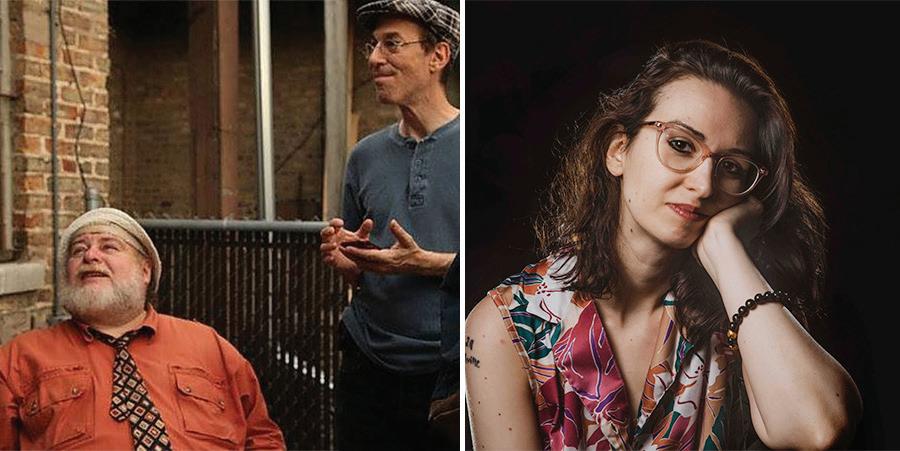
Prior to the COVID shutdown, Lilley was working on Diary of an Erotic Life, a devised piece derived from proto-Expressionist Frank Wedekind’s writings, including his famous “Lulu” plays. Those also formed the basis for the 1929 film Pandora’s Box , starring blackhaired siren Louise Brooks and Brun’s grandfather, Austrian actor Fritz Kortner. Lilley has also produced site-specific work in the past, including an adaptation of Faust with the Runaways Lab Theater that played in various living rooms around the city.
“I think that what will likely happen is that Prop will find a long-term rehearsal space because we do develop our shows over longer periods of time,” says Lilley. “The thing that is the most ongoing about our programming is the new play development aspect.” (Prop is also one of the founding members of the National New Play Network, a consortium of companies around the country dedicated to fostering and sharing new work.)
She adds, “I mean, I am very sad. I am mourning. Absolutely. But I’m also excited for all of Prop’s board and sta and all of the eyes that are on the programming, on what we’re producing, on what we’re developing. And then also being able to start to kind of integrate some of the demands from We See You White American Theater and other documents
22 CHICAGO READER - AUGUST 6, 2020 ll THEATER
Prop cofounders Scott D. Vehill and Stefan Brun; current artistic director Olivia Lilley COURTESY PROP THTR/LENNY GILMORE
CHANGING SPACES
R READER RECOMMENDED b ALL AGES F
of that nature to really be anti-racist in all aspects of Prop.” Lilley, who is Iranian and Irish, notes, “Only myself and one other person on Prop’s staff are people of color, and I’m also white passing.” Diversifying the board is a goal for Prop, as it is for many other primarily white-led cultural institutions.
As Brun points out in an e-mail, “Much of the history of our work at Prop, even before Olivia, was about increasing the feeling of ownership in the artistic work by performers and designers. The term ‘devising,’ though of more recent origin, combines well with our long-years ‘floating-hierarchy’ approach: allowing individual viewpoints within the work, temporary authority over the process at appointed times. So now it becomes much more important to be available to all of Chicago’s population.”
What that means in practical terms, according to both Brun and Lilley, is that the focus will remain not on physical capital, but human capital. “One of the other main components of Prop’s model is that an actor is paid equal to a designer. Everyone is paid equally. Fifty percent of ticket sales go to the artists,” says Lilley. Brun lists the priorities going forward as “1. Space use to gather safely and rehearse and meet. 2. Show production and promotion costs. 3. Payments for working artists, along the lines being developed by the current sta and board.”
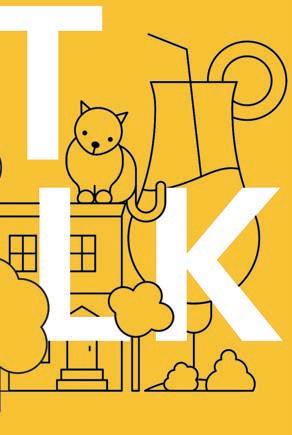
Several years ago, I wrote a chapter about Prop for a book project on Chicago’s “established alternatives”: companies that have been in operation for decades without ever feeling the need to grow into larger institutions with spiffy new facilities. That project never got published, but the picture that emerged from the research I did at the time was of a company that wanted to make space for theater artists and audiences who didn’t necessarily feel like they belonged anywhere else. Some of that openness undoubtedly also came from their long association via Curious with Rhino Fest, which has always provided opportunities for people who don’t have tons of previous experience writing for the stage, but still have interesting voices and aesthetic viewpoints.
Kunz Vehill notes that her long association with Prop “allowed me to feel like a theater kid even though I’m not a theater kid. It absolutely has to do with the fact that Prop has always had many different groups in there at any single time, and was always literally open door. You could wander in and out of the building and sit in the lobby for a few minutes
and just talk to people.” Families and families of a nity have also always been a part of the Prop world. The Avondale space has an apartment upstairs that has provided shelter for various Prop-a liated artists over the years, and walking into the lobby and seeing the kids of Prop and Curious ensemble members and other artists all hanging out together was a common experience.
Kunz Vehill notes that Paula Killen, a former Chicago solo performer now based in Los Angeles, posted a memory about Prop on Facebook in response to the announcement about the impending sale. Killen was in town to perform at Prop with her son, then four years old, in tow. At the same time, Professor Irwin Corey, the stand-up comic and activist whose improvisational work presaged that of comedians such as Lenny Bruce, was staying with the Vehills. (Corey, who died at 102 in 2017, had become friendly with Scott Vehill years earlier.) “So Paula posted about how she’s downstairs creating art and her fouryear-old son is upstairs with Professor Irwin Corey. Where else does that happen?” asks Kunz Vehill.
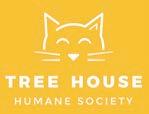
As larger theaters with high fixed costs (including buildings) face down the long-term implications of the COVID catastrophe, it may well be that Prop, with its proven tenacity and adaptability, could provide one model of how to survive and thrive once theaters are producing again.

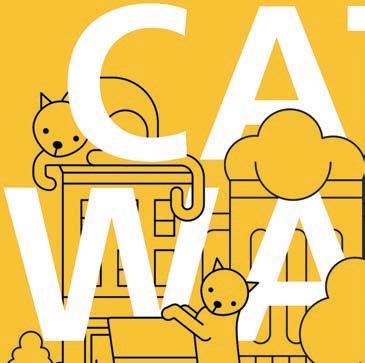
Brun notes, “Founded in 1981 under a president every bit as bad, if more competent, Prop negotiated the fiscal turn away from the arts at its inception also. While who we are able to serve has expanded and diversified, our approach of making the experiment, the new idea, the gist of the story matter far more than the decorations, the fanciness, the culinary pampering or the big egos—will serve us also quite well into the future. I am actually eager to see those who are now empowered to demand better conditions for artistic workers go further and take over the means of producing their own work like Prop Thtr has done the last 40 years.”
Says Lilley, “COVID has allowed us to do a lot more meetings and thinking and processing and we are a very, very strong and united force now. Prop has always been very much about the people—the people creating that space and the community. So is Prop a building, or is Prop what happens between people? I think it’s the latter.” v
@kerryreid
AUGUST 6, 2020 - CHICAGO READER 23
THEATER $15 $20 + $10 EARLY BIRD TICKETS AVAILABLE ONLINE JULY 1-31 REGULAR TICKETS AVAILABLE ONLINE JULY 25 - AUGUST 22 OPTIONAL ADD-ON: TREE HOUSE-THEMED HOME SCAVENGER HUNT GAME! FRIDAY 4PM TO 9PM + SATURDAY 2PM TO 8PM AUGUST 21+22, 2020 BUY YOUR TICKETS ONLINE TO HELP “EVERY CAT THRIVE!” YOUR TICKET AND DONATION SUPPORT SOCIALLY CONSCIOUS SHELTERING & ANIMAL WELFARE IN CHICAGO. Virtual Connections, Real Fun!
Cat Walk ticket purchase helps support Tree House & entitles you to a Cat Walk Swag Bag:
Tree House face mask
Cat Walk Passport — Your guide to carry-out specials at our partner pubs. Have a great party at home for TWO days! • Access to our Cat Walk Videos: Cat fun, contests, prizes, and our Final Toast Live Stream! 2020 Cat Walk is a virtual event flowing Friday to Saturday,
Your ticket enables you to visit one or two bars for specials, or any of our partnered pubs and breweries!
your TH mask & Passport
your
enjoy Cat Walk carry-out specials
our partners!
pub will
staff and volunteers stamping passports and sharing
prizes. Then, enjoy your tasty beverages and food at your own Cat Walk experience
your home! Two days of fun, prizes, and virtual get-togethers to keep the beer flowing for our guests and the funding flowing for Tree House cats! treehouseanimals.org/catwalk Funds raised will help the over 4,000 adoptable and community cats that Tree House serves annually. To help Tree House via a business sponsorship, contact: ewashington@treehouseanimals.org
Your
•
•
August 21-22.
Using
(and
perfectly-honed social distancing techniques),
from
Each
have a Tree House table with
table
in
ONLINE PERFORMANCE
Games with frontiers

Two streaming productions look at isolation, community, and borders.
 By KERRY REID
By KERRY REID
As sacrifices go, staying home when possible and wearing masks in public seem like fairly small requests. But as we’ve seen, when hyperindividualism trumps community, the results can be deadly.
Two new streaming theater pieces from Chicago companies take very di erent approaches to examining the social contract. Trap Door, longtime purveyors of plays from Europe that the U.S. regional houses mostly shun, goes back
to a favorite collaborator for ALAS , created digitally by the artists in isolation. And Otherworld Theatre, the home of sci-fi and fantasy narratives, examines a group of gamer pals facing rifts in their friendships in Of Dice and Men, which was staged live one time with the actors in the empty venue (more on that later) and is now available online.
ALAS Romanian-born playwright Matei Vişniec

knows about living in exile—he sought political asylum in France in 1987, and since then, most of his work has been written in French. Trap Door has staged five of his plays—Old Clown Wanted, Occidental Express, Horses at the Window, How to Explain the History of Communism to Mental Patients, and The Word Progress on My Mother’s Lips Doesn’t Ring True—over the past 15 years. I’ve seen the latter three, and the common thread for those pieces is a corrosive and kaleidoscopic embodiment of the enduring e ects of warfare and genocide. In The Word Progress , the ghost of a slain soldier in an unnamed country that feels very reminiscent of the 1990s Balkans observes, “There are 30 nationalities in the bowels of this earth. But at least we all get along now.”
dimensional stagecraft.
Of Dice and Men
Otherworld Theatre rehearsed Cameron McNary’s 90-minute drama—a remount of a 2014 play about a group of gamer friends hitting 30 and facing various life changes—via Zoom. Then director James Martineau and the cast of six, plus a stage manager and limited crew, spent six hours in the otherwise empty theater to tape Of Dice and Men as a live performance. (If you’re wondering about the safety protocols they followed for the in-person work, the company released an explanatory video on the subject.)
The story intertwines the players with their Dungeons & Dragons characters, with the lines between the worlds nearly erased by the gaming climax. But McNary also gives us a solid Nick Hornby-esque take on friendship and romance. John Francis (Leo Michael LaCamera), the dungeon master and glue for the crew, has decided to move out of his mom’s basement, recognizing that “I’ve become a fucking stereotype of my hobby,” and take a job in San Francisco. However, the real dilemma for the friends is the announcement by Jason (Jacob Bates) that he’s joined the Marines. (The play is set in the early days of the Iraq War.) This particularly upsets John Alex (Scott Francis Longpre), who seemingly has some qualities in common with his “backstabbing rogue” D&D character and who hates seeing disruptions in what he views as a comfortable life pattern.
RALAS AND OF DICE AND MEN
ALAS , open run, available anytime with purchase, trapdoortheatre.com, $10 ; Of Dice and Men , free through 8/ 14, then afterward for donation on Patreon, otherworldtheatre.org.

ALAS is a fragment of a larger Vişniec piece, Cabaret of Words, translated by Daniela Șilindean and directed by Michael Mejia, featuring a cast of 16, from Trap Door local regulars to artists from their sister company, Trap Door International in Barcelona. It’s more of an experimental film than a narrative theatrical piece translated online, and as such it’s in perfect synch with the entwined strengths of Trap Door and Vişniec; building a sense of fear and paranoia through reiterations of key phrases (some delivered in Afrikaans, Catalan, Italian, and Spanish as well as English), with occasional dashes of mordant wit and raw explosions of primal pain. (Trap Door’s love of exaggerated makeup, designed here by the actors, and stylized movement is also present.)
“Alas, country, alas, alas, pain, barbarians, invaders, freeloaders, really . . .” is a recurring refrain in this 20-minute piece, as are blasts of gunfire in the background. Set in an alleged utopia, the clear implication is that we’ve constructed a notion of freedom and security that depends on shutting out those who are less fortunate. At various points, actors recite a declension: “I fence o . You fence o . He fences o . We ALL fence o .”
Mejia favors closeups on the performers’ mouths, which reminded me of Samuel Beckett’s Not I, which similarly features an actor reciting a torrent of jumbled fragments against the backdrop of an enlarged mouth. It’s a hallucinatory and disquieting experience, and Trap Door shows they’re as adept at using film to honor Vişniec’s visions as they are three-
The political underpinnings of the war don’t really feature with any depth here, but the juxtaposition of the fantasy conflicts of D&D with the characters’ struggles away from the dice and giant worms creates a generally satisfying narrative arc. The actors go to town with their D&D characters, especially Sarah Jean Tilford as Durak, a boastful dwarf with an exaggerated Scots accent straight out of Shrek, and MaryKate Arnold as Alaya, a “half-elven double princess” who keeps getting killed. (Alaya’s nongame counterpart is Tara, John Francis’s unrequited love interest.)
By the end, the crew learns that growing up doesn’t require putting aside “childish things,” as long as adult relationships make room for big shifts in each other’s personal storylines and cultural tastes. As Brandon (Nathan Randall Miller), the husband of Linda/Durak, who far prefers football to gaming, puts it, “Football and D&D have one thing in common. They are both completely and utterly pointless. And they both matter.” v
@kerryreid
24 CHICAGO READER - AUGUST 6, 2020 ll
Of Dice and Men TIFFANY KEANE SCHAEFER
REVIEW



A Most Beautiful Thing reunites the first all-Black high school rowing team
The Chicago-based documentary flips the script on the white savior story.
By JOSH FLANDERS

In 1997, on the west side of Chicago, a group of Black boys from Manley High School made a decision that would forever shape their futures. Although they already risked their lives just walking to school, they took a different kind of risk as well: getting in a boat. The documentary A Most Beautiful Thing reunites the first all-Black high school rowing team in the nation, and the youth, now men pushing 40, who made history by being trailblazers and who now want another shot at competing. Narrated by Grammy- and Oscar-winning artist Common, and executive produced by NBA Hall of Famer Grant Hill, NBA All-Star Dwyane Wade, and Grammy-winning producer 9th Wonder, this inspirational story of achievement features a moving hip-hop score with original tracks by femdot., Reuben Vincent, Ian Kelly, King Draft, and Swank, with beats by E.Jones, Khrysis, and Kash.
The film’s protagonist is charismatic Arshay Cooper, whose self-published memoir Suga Water (now republished by Flatiron as A Most Beautiful Thing) caught the attention of former Olympic rower and award-winning filmmaker Mary Mazzio, director of the documen-
tary. The film recounts how each of the young men, many from rival gangs, decided to learn the sport and compete in a national rowing meet. “When we were on the water,” Arshay wrote, “we were in a place where we couldn’t hear the sound of the sirens or bullets, and that allowed us to shape a di erent vision for ourselves, of who and what we could become.”
The lifelong impact of this childhood experience is apparent in each of their stories. There is Arshay, whose mother dealt with addiction and whose family struggled with gangs and drugs, who found hope when she got sober and the family changed. There is Alvin, who, despite going to prison, credits Arshay for coming to his house every day, which he said kept him out of a gang. Preston also struggled with a mother on drugs, and they both spent time in prison. The most di cult thing he had to overcome, he says, was himself. Malcolm, on the other hand, says the most di cult thing he overcame was his abusive father.
Each of these intimate interviews turn a spotlight on the intergenerational trauma they all shared, their fraught relationships with police, and the violent neighborhoods
they lived in. They point out that while income inequality is often spoken of, the safety inequality of living on Chicago’s west side is not. Rowing became a metaphor, showing them that they could not move forward alone, but together as one.

The inciting incident that brings everyone together is the death of one of their former coaches, Mike O’Gorman, who they all admit meant well but was “kind of racist.” At the wake, which they all attend, the former teammates decide to race again in the Chicago Sprints. Cue numerous training montages and the fantastic hip-hop soundtrack. Arshay raises the stakes by inviting some Chicago police o cers to train and compete with them, sitting in every other seat.
While A Most Beautiful Thing starts as a typical “white savior” story—a couple of white guys bringing rowing to divested neighborhoods—it does flip that narrative. White savior narratives do not address the failures these young men faced, not winning, not going to college. Yet today they are all entrepreneurs, a true testament to their hard work. Arshay is clearly the impetus for this exciting reunion as well as their decision to compete again as adults and to bridge the gap with law enforcement. The teammates show great vulnerability, in one scene earnestly talking about how they make jokes to avoid the pain. However, the police serve mainly as props to their story. These brave men take on the responsibility to provide an opportunity to fix broken relationships with the officers and speak about how that experience changed them, yet the o cers do not speak to how, or even if, they are changed.
The film begins with each of the men recounting how they were each about ten or 11 years old when they first saw someone killed in their neighborhood. This hardened them, left them growing up feeling almost nothing. Today each of these men credit their success, their ability to be more functional family members and friends, with their decision all those years ago to take a risk and to work as a team. This is a film that every child in the city of Chicago needs to watch because we are all in the same boat. v
AUGUST 6, 2020 - CHICAGO READER 25
FILM
@joshua_flanders
COURTESY 50 EGGS FILMS
A Most Beautiful Thing
ssss EXCELLENT sss GOOD ss AVERAGE s POOR • WORTHLESS A MOST BEAUTIFUL THING sss Dir. Mary Mazzio, 95 min. Streaming on Xfinity VOD starting 7/31, Peacock starting 9/1, and Amazon Prime mid-October TO ADD YOUR EVENT TO TIXREADER.COM, SEND AN EMAIL TO mroader@chicagoreader.com SAT AUG. 8 Sophia Lucia Presents: Freak Show Cabaret! @ Online AUG. 29 Nesh and Lee Lee Live @ North Bar (EVENT REPEATS WEEKLY) SAT Never miss a show again. EARLY WARNINGS Find a concert, buy a ticket, and sign up to get advance notice of Chicago’s essential music shows at chicagoreader.com/early.
Matt Damon Improv goes online with In-Diana
The Chicago comedy group’s new webseries is filled with Zoom meeting disasters and personal massager triumphs.
 By BRIANNA WELLEN
By BRIANNA WELLEN
Zoom work meetings are now a way of life. Those who used to frequent o ces and conference rooms have had more than their fair share of coworkers with clever Zoom backgrounds, surprise appearances by pets, and “Sorry, can’t hear you, you’re muted” moments. Less frequent are enthusiastic descriptions of pornography, kitchens on fire, and views inside a coworker’s bathroom—and their unsavory bathroom habits. The characters of the webseries In-Diana experience it all.
The seven-episode series was written and directed by, and stars, the women of Matt Damon Improv—Allison Reese, Ana Silva, Maria Konopken, Phylicia McLeod, Tina Arfaee, and Yazmin Ramos—and was all recorded over Zoom.
“The reason why we made this was because we love working together and we just have so much joy being together and creating together,” says Silva. “This whole series came
from a place of just us reveling in the glory of each other and being able to share that with people.”
When performing live isn’t a threat to public safety, Matt Damon Improv performs a weekly show at the Annoyance Theatre. All the regular cast members are women of color, and there is one guest, designated the “Matt Damon,” who can only speak using lines that have already been said by one of the core cast members.
“A big part of our improv group, and what we do as a form, is we are women of color and we want to empower ourselves, empower people who look like us or who maybe identify with us in some way, and that’s always been the backbone of what we do,” Reese says. “But first and foremost, we’re all freaks.”
The freak flags fly strongly and proudly in In-Diana . The story follows six women who work at a company called In-Diana that makes, among other things, personal back massagers.
Boss Alex (Reese) and her employees have to readjust when it becomes clear people aren’t using the massagers for their backs, and the company finds sudden success as a go-to for quarantine vibrators. What starts as a series of typical Zoom meetings soon descends into hilarious, very not-safe-for-work madness, each five-minute episode going further than the last.
The idea was originally written by Reese for a late-night show-writing packet. She soon realized the idea was bigger than a three-minute sketch and brought it to the women of Matt Damon Improv to expand into a webseries. It was a welcome excuse for the group to connect.
“We’ve been seeing each other like every single week for three years, so not having that was super crazy to start,” Silva says. “Once we started having those weekly meetings [for the webseries] it was not only a little bit of routine in the fact that we were still keeping at least one part of ourselves going, but also we gave ourselves a schedule, and we gave ourselves deadlines, and we were able to hold each other accountable. For me that’s a huge thing, because if no one’s holding me accountable I turn into a bit of an artistic blob.”
They made quick work of the project—writing for the series started in early April, and the final two episodes premiered on YouTube on August 3. The six women did every aspect of the project themselves except the editing, and even then they made sure to bring in women of color to stick to their core mission. They are also using the series to give back,
using each episode to request donations via @InDianaWebSeries on Venmo to be distributed to Brave Space Alliance, Chicago Birthworks Collective, and Chicago Community Bond Fund. So far they’ve raised nearly $400.
“We had taken some time o and away from the series when protests were happening so people could do that and we could protect our hearts through all of everything that was going on,” Reese says. “We realized that we can’t release this without giving back to the communities that helped us and are doing so much for us right now.”
One episode of the series in particular, “Dark Side of the Zoom,” addresses the feeling of dread that frequently hits because of the current state of our world. Taking a pause from the bizarre and laugh-out-loud moments from the other episodes, the cast members simply show o their pets, baked goods, and, in Reese’s case, her wife (it’s one of many purposeful Easter eggs for those who know the women of Matt Damon Improv on- and o stage). It’s a tender moment that speaks to the depth of the characters the women have created and radiates love from within the group. Moments like this are why there may be a season two of In-Diana on the horizon and why Matt Damon Improv will keep creating, no matter what.
“I don’t see it stopping,” Reese says. “Beyond that show and that form, we’re all just really tight friends, so there’s no end in sight.” v
26 CHICAGO READER - AUGUST 6, 2020 ll FILM
@BriannaWellen In-Diana
SMALL SCREEN
NOW PLAYING
An American Pickle
An American Pickle lacks bite. Based on Simon Rich’s 2013 short story “Sell Out,” it stars Seth Rogen as both Herschel Greenbaum, an immigrant worker at a pickle factory who is accidentally preserved for 100 years and wakes up in modern-day Brooklyn, and Ben Greenbaum, his great-grandson. Ben works from home as an aspiring app developer who has yet to sell anything. This concerns and upsets Herschel, who years ago promised his wife Sarah (Sarah Snook) that the Greenbaums would become more prosperous with time. Thus begins a family ri as Herschel disowns his kin, and Ben attempts to sabotage Herschel. The resulting shenanigans are hardly humorous enough to discuss, relying on hack and harmful jokes about hipsters and gender, respectively. Wrapped up with a predictable and bluntly delivered reconciliation, the film fails to fully develop the human element it hinges on, hindering the development of any real connection to the characters. —BECCA JAMES 90 min. HBO Max
Days of the Whale
Colombian writer-director Catalina Arroyave Restrepo’s feature debut explores street art as a means of dealing with and fighting back against violence. Cris and Simón (auspicious newcomers Laura Tobón Ochoa and David Escallón Orrego, respectively) are young people in Medellín who want nothing more than to “paint”—which, in this case, means putting up artful graffiti around the city. Both frequent an arts collective where they and fellow community members express trepidation over rising gang violence. Not expressly revealed in the film but still prescient is that their city was once considered the world’s murder capital when drug lord Pablo Escobar led the infamous Medellín Cartel. In comparison to Escobar’s legacy, the violence considered in the film exists on a much smaller scale; it revolves around the conflict that develops when Cris and Simón plan to start painting a whale—a tribute to Cris’s mother, a journalist who le the city due to threats against her life—over some menacing graffiti posted by a local gang attempting to coerce protection
money from the arts center. Overall this is compelling but slight; it brims with an energy that befits its young protagonists but doesn’t otherwise leave a lasting impression. In Spanish with subtitles. —KATHLEEN SACHS 80 min. Gene Siskel Film Center From Your Sofa

R A Girl Missing
Japanese writer-director Kôji Fukada reunites with actress Mariko Tsutsui (who appeared in his 2016 film Harmonium) for this lithe drama about a home-care nurse, Ichiko (Tsutsui), whose nephew kidnaps the granddaughter of one of her elderly patients, setting into motion a chain of events that drastically changes her life. Such galvanic developments are a matter of course for Fukada; his films o en begin as seemingly unambiguous domestic dramas, then transform into something aberrant as his characters’ lives become precarious—this can be read as a critique of the facade of stability that delimits Japanese society. Here, Fukada oscillates between two timelines: in the present Ichiko uncharacteristically pretends to be someone else in order to seduce a handsome hairstylist (Sôsuke Ikematsu); meanwhile, understated flashbacks present her life before this act of deception, focusing on her relationship with the kidnapped girl’s older sister (Mikako Ichikawa), whose preoccupation with Ichiko borders on erotic. Fukada’s films don’t overly emphasize their near-melodramatic twists and turns; rather, a matter-of-factness prevails, his films mirroring the impervious complexities of daily life. In Japanese with subtitles.
—KATHLEEN SACHS 111 min. Facets Virtual Cinema
I Used to Go Here
I Used to Go Here’s casting is far more clever than the movie itself. Gillian Jacobs, as Kate, a 35-year-old writer with a bogus book and a broken relationship, calls to mind Mickey, Jacobs’s character on Netflix’s Love, and showcases her ability to play the talented but aimless to perfection. Somewhere between Mistress America and Young Adult, as the plot begins to probe millennial mundanity further, it mirrors Liberal Arts to an uncanny degree, and Kate is asked back to her alma mater by a
beloved professor (Jemaine Clement). She jumps at the chance to recapture the feeling of endless possibility that youth grants. Enter a skilled ensemble with standout April, a gi ed and ambitious writer, played with authentic ease by Hannah Marks, a young and highly accomplished force in the film world herself. The relationship between Kate and April offers a fascinating look at generational aspirations and is the high point in an otherwise predictable production. —BECCA JAMES 80 min. Music Box Theatre and Music Box Theatre Virtual Cinema
R She Dies Tomorrow
Amy Seimetz’s long-awaited sophomore feature is a movie for the moment. Amy (Kate Lyn Sheil) becomes overwhelmed with the thought that she is going to die tomorrow—and she’s not alone. Every person who comes in her wake feels it, too, and that fear quickly spreads like a virus. Seimetz doesn’t waste the audience’s time with overt and unnecessary exposition; rather, she transports you right into the throngs of anxiety and paranoia. Lyn Sheil is a knockout, making a powerful performance out of madness that you can’t look away from. She Dies Tomorrow is not just concerned with death, but also with how the fear of death is all-consuming and exposes the parts of the human condition that are better le buried away. Featuring a fragmented, but not confused, narrative style, a thoughtful sense of color theory, and a haunting classical-inspired score, She Dies Tomorrow is a worthy examination of a collective unravelling. —CODY CORRALL 84 min. In wide release on VOD
RThe Speed Cubers
Following two champions in the world of “speed cubing” (where participants rapidly solve Rubik’s Cubes, sometimes with one hand), this bite-sized documentary bypasses the predictable narratives of 80s nostalgia and competition and instead focuses on a touching friendship. Narratives about top-level male competition tend to indulge in the narrowest and most toxic swath of what masculinity can look like, yet when director Sue Kim turns the camera on world champions Feliks Zemdegs and Max Park, she completely breaks the mold. Like that of many professional athletes, the career of a speed cuber ends abruptly, on the cusp of the encroaching responsibilities of a less-glamorous adulthood, and the doc follows Zemdegs as he begins to grapple with the transition into the “real world” at the same time that his world records are being obliterated by young up-and-comer Park. Park is similarly grappling with his own coming-of-age struggles, as an autistic teenager who doesn’t always meet societally expected social-emotional growth benchmarks. For both Zemdegs and Park, the world of speed cubing offers a safe refuge where they can flourish before the demands of a decidedly more complex world push them far outside of their comfort zones. The Speed Cubers is a refreshing glimpse of the sustaining power of the purity of friendship
and brotherhood, and a reminder to not underestimate the transformative magic of playing games. —SHERI FLANDERS 40 min. Netflix
R Spinster
“People are dicks to single women.” The sentiment isn’t uttered until about three-fourths of the way into the film, but it’s the defining thesis of director Andrea Dorfman’s dramedy. On her 39th birthday Gaby (Chelsea Peretti in her first starring feature role) is dumped by her accidental live-in boyfriend and gets consumed by the idea of being alone forever, prompted mostly by the family, friends, and strangers around her. What comes next is a refreshing midlife coming-of-age story. Gaby isn’t a slacker and doesn’t lack direction, she isn’t overly obsessed with love or woefully undateable. The path to discovery is filled instead with appreciation for all the things she really wants in life—a relationship with her niece, her own business, a “used” dog. While there are glimpses of Peretti’s signature sarcasm and ribbing in the funniest moments of the film, she grounds the film with a deeply genuine and emotional performance, especially in scenes with her niece Adele, played by charming newcomer Nadia Tonen. Without contrivances or cliches, Spinster is a breezy, feel-good watch about carving your own path—and a strong case for many more Peretti-driven films in the future. —BRIANNA WELLEN 87 min. In wide release on VOD
R A Thousand Cuts
In early 2016, strongman candidate Rodrigo Duterte became president of the Philippines by way of an election that presaged the one that would occur in the United States several months later. He immediately followed through on his promise to wage a war on drugs, deploying undue brute force in his efforts. Along with her staff, renowned Filipina journalist Maria Ressa, founder and CEO of the news site Rappler, vigorously reported on Duterte and his cronies, detailing not just their violence but also the underhanded ways they used social media to spread untruths. Filipina-American writer-director Ramona S. Díaz (Imelda, Motherland) documents these events, framed by the lead-up to the Philippines’ 2019 midterm elections, plus Ressa’s multiple arrests at the behest of Duterte’s administration and the general harassment of Ressa and various journalists by him and others in the PDP-Laban party. There’s a lot going on here—as befits the nuanced subject matter—so at times the documentary is unwieldy, but Díaz offers illuminating access into crevices of Filipino politics and society. One comes to appreciate the heroism of Ressa and her fellow journalists, as well as opposition politicians like Vice President Leni Robredo and senatorial candidate Samira Gutoc, the latter of whom appears as she runs for office as part of the Otso Diretso alliance. In English and Tagalog with subtitles. —KATHLEEN SACHS 98 min. Gene Siskel Film Center From Your Sofa v
AUGUST 6, 2020 - CHICAGO READER 27 FILM
R READER RECOMMENDED b ALL AGES N NEW F
Get showtimes and see reviews of everything playing this week at chicagoreader.com/movies
An American Pickle

28 CHICAGO READER - AUGUST 6, 2020 ll
G Herbo in 2018 on the campus of Anthony Overton Elementary, which he and several partners bought to repurpose as a multimedia lab and tech incubator
THOUGHTPOET
G Herbo helps Black youth treat their trauma
Diagnosed with PTSD, the Chicago rapper wants to normalize therapy for people who’ve suffered like he has—and he’s giving away hundreds of sessions.
By AARON ALLEN
July was Minority Mental Health Awareness Month, and Herbert Wright III— better known as rapper G Herbo—has had a lot on his mind.
In February, Herb released his latest album, PTSD , which explores the effects of post- traumatic stress disorder on his upbringing in Chicago. He was diagnosed with PTSD almost two years ago, and since then he’s become an outspoken advocate for accessible mental health resources, specifically in underserved Black communities.
Last week Herb announced the launch of a multi faceted initiative called “Swervin’ Through Stress: Tools to Help Black Youth Navigate Mental Wellness.” It’s designed to provide therapeutic resources for young adults who have experienced trauma, and to raise public awareness about mental health issues. To get the initiative off the ground, Herb’s label, Machine Entertainment Group, has partnered with the National Alliance on Mental Illness, music-streaming platform Audiomack, and Massachusetts-based InnoPsych, which works to connect POC with therapists of color.
“Swervin’ Through Stress is a project I put together to put 150 kids through therapy,” Herb says. “At their age, you never know how critical it can be to have someone to talk to—
to have someone help you better yourself and your situation.”
Herb is offering free 12-week therapy sessions to Black youth ages 18 through 25, partially funded by proceeds from a T-shirt collaboration with local designer Don C, owner of Chicago streetwear staple RSVP Gallery (applications will be accepted beginning in September at swervinthroughstress. com). Working with NAMI, Herb’s team has also created a hotline for anyone who needs to talk to a professional: right now it’s operating Monday through Friday from 9 AM till 5 PM CST at 844-457-PTSD (7873), and emergency help is available 24/7 by texting NAMI to 741741.
Additionally, on Wednesday, July 29, Herb participated in a livestreamed panel on Twitch with fellow rap stars: City Girls, Saweetie, Wale, and NLE Choppa. Moderated by psychiatrist Jessica Clemons, it aimed to help destigmatize therapy for Black youth and encourage open dialogue about mental health.
In many ways, Herb’s crusade for emotional and mental wellness is uncharted territory in hip-hop. The genre is built upon machismo and toughness, and that’s especially true for artists known as gangster rappers—artists like Herb, whose lyrics largely consist of vivid
depictions of life growing up in one of Chicago’s infamous red zones.
Lately, though, Herb has tapped into a new level of emotional honesty, spurred by the personal growth made possible through therapy. “Everything I do comes from my life experience,” he says. “I understood at an early age that even though my story is signifi cant in its own way, other people could relate to it. But I was never motivated to be a voice [on PTSD] or a key focal point until I recognized I actually became a product of it. That was a direct result of being in the streets, losing people close to me.”
The fi ght to raise awareness about the e ects of trauma on young Black people hits very close to home for Herb. Growing up in the South Shore neighborhood, in a disinvested area of the city commonly known as “Terror Town,” Herb was surrounded by drug addiction, violence, and the daily trauma of living in poverty. Herb says he witnessed his first murder when he was eight or nine years old, and even though his mother was there when it happened, he never really spoke with her about it—or with anyone else.
By his mid-teens, Herb had lost several friends and associates to gun violence in his neighborhood—premature death had become
normal, even expected. In the ninth track on PTSD, “Gangbangin,” Herb raps, “I got a story to tell you, a memory vivid with niggas that died / I got so immune that I was confused and ain’t know if not I should cry.”
Feeling paralyzed by trauma in a world where everyone he knew was going through similar daily struggles and facing the same mental battles, Herb felt his only option was to suppress his emotions and adapt. “I feel like I really became a product of my environment,” he says. “I grew immune to it.”
The emotional stress resulting from this normalization of daily shoot-outs and near-death experiences heavily impacted the choices he made throughout his adolescence. Looking back, Herb attributes a lot of his early decision-making to the PTSD from which he silently su ered.
“Trust me, with PTSD, you make certain decisions based upon the way you feel and how you react to certain situations,” he says.
“I couldn’t finish school because I had PTSD. I didn’t know I had PTSD, but I know I couldn’t graduate high school because I was in fear of somebody always trying to do something to me, trying to kill me. I was in fear of my life all the time, so I had to carry guns.”
Herb believes that life all comes down to the decisions you make as an individual, and
AUGUST 6, 2020 - CHICAGO READER 29
his trauma-led choices pushed him further into the streets.
“I wanted to play basketball, I wanted to go D1. I wanted to go to school,” he says. “But I was afraid that someone might try to kill me while traveling there. So I ditched. Sometimes I would go to jail when I should’ve been in school. Sometimes I got shot at when I should’ve been in school.”
On the cover of PTSD , Herb holds a bleeding, bullet-riddled American flag, with faces of deceased friends and associates replacing the 50 stars. A common theme in his music is the sense of brotherhood he built with his neighborhood crew as they took losses and learned to survive the harsh east-side streets together, without older figures to protect or advise them. Without real mentorship or leadership structures in the community, they were forced to make adult decisions on their own. They operated on survival instinct, and coped with the massive amounts of trauma a ecting them the best ways they knew how.
For Herb, coping meant turning to the most accessible and most socially acceptable method to escape his reality.
“I started to self-medicate and do drugs like crazy,” he says. “I was addicted to lean, I was addicted to Percocets, oxycodone pills . . . all these heavy substances at 15 years old. And it took a real big toll on me.”
His drug addiction took such a toll, in fact, that Herb eventually visited a Phoenix detox facility and participated in a 30-day retreat to get clean. After coming home from his first visit, he relapsed and had to complete a second stay.
Herb’s early music thoroughly documents the trauma he endured in the streets and his heavy drug use, but he says no one ever presented therapy or any type of professional help to him as an option. Today he feels that he would’ve been much better o if he’d been directed toward help earlier, or better yet, if youth in neighborhoods like his had regular access to those types of resources in the first place.
“You’d be surprised to see how many kids have absolutely no one to open up to to get insight on life,” he says. “And I feel like that’s unfair. So many kids have that and take it for granted. If I had someone to talk to at 14, 15, I would’ve made a lot better decisions for myself.”
Herb reached a turning point in his journey when he was arrested in February 2018 on a gun charge (along with two others) after being pulled over in
the South Loop. Herb’s lawyer, while working on his defense, suggested that his client see a therapist to demonstrate his sincerity to the court—and to help him work through the trauma that led him to feel like he had to carry guns in the first place.
At fi rst Herb thought the idea of venting to a stranger was ridiculous. He describes his therapist as a white woman in her 30s who had no familiarity with the world where Herb had learned to survive. But he says this cultural gap turned out to be useful, because it forced him to open up more candidly to better illustrate his point of view and allow her to understand the baggage he carries.
He remembers his first session as especially cathartic, and frequently mentions that he cracked his ID in half from anxiously fi dgeting with it while venting.
“She was just listening that fi rst therapy session. Honestly, she was psyched out by a lot of the stu I was telling her,” Herb explains. “That’s why I ended up breaking my ID, just telling her so much stu . You know it hits home talking about losing people who close to you.”
One trip turned to five, and five eventually turned into regular visits. As Herb began developing trust with his therapist, he shifted from recalling difficult memories to really analyzing how those experiences shaped the person he has become—and how they continue to a ect the ways he navigates the relationships that mean the most to him.
“I would say 80 percent of my therapy sessions were about my son and being a long-distance father, living in another state as my son, controversies with me being an artist, stu that I’ve been through throughout my journey,” he says. “Being an early father, making mistakes as an early father and trying to correct that.”
Herb insists that pinpointing harmful behaviors and toxic traits while reflecting on life through the eyes of a trusted, unbiased person has allowed him to work through his past deliberately, instead of simply trying to get high enough to avoid it. “Therapy helped because it was cool to get opinions and insight from someone who didn’t see life from the perspective that I saw it,” he says. “I’ve been through a lot at an early age, and we get desensitized by it. But I feel like therapy helped me in a way that made me able to help myself.”
As Herb continues to find solutions in his battles with his demons, he’s also been thinking a lot about creating solutions for kids who are growing up
like he did and face similar poverty-related traumas.
“PTSD is not just related to having experienced violence—it’s a stress disorder,” he says. “It’s about reliving certain moments. People don’t come back from epidemics and recessions, when they’re not able to provide for their families for months and months. All that goes right back to PTSD.”
In 2018, Herb and his partners, including Joseph “JB” Bowden and Mikkey Halsted at Machine Entertainment Group, bought shuttered south-side school Anthony Overton Elementary to rehab and repurpose it as a multimedia lab and tech incubator, to provide sorely needed safe recreational spaces for inner-city kids. But Herb knows that the material resource gap is only half the battle. He considers individual healing and wellness resources to be just as important.
“Coming from where we come from, we don’t have nobody to open up to. We don’t have nobody to tell us that this stuff isn’t normal,” Herb says. “That’s why I’m doing this project, giving kids therapy. And it works hand in hand, because we have a facility to be able to put our resources back into the community, to give the kids a safe haven, and the opportunity to do things like Swervin’ Through Stress, to be able to do things like giveaways, have block parties, and give back to the community in any way possible. It’s a blessing, and I’m grateful to be a part of this. I’m excited to see what the future holds.”
Herb is determined to make these 150 kids just the beginning of his therapy program. He says the next goal will be 500 kids, and he hopes to keep expanding from there.
Are Herb’s childhood friends who came up in the streets with him following his lead and seeking professional help? He says they’re aware that he goes to therapy and that it has probably crossed their minds, but people have to want it for themselves—he doesn’t want to impose his life choices on others. He says everyone should try it at some point, though, because we all have repressed feelings to work through.
“I can’t tell you how your sessions would go, but I would recommend everybody to go through the process,” Herb says. “A lot of times, people don’t understand or realize it, but you hurt the people closest to you while suffering from this mental illness, because you think it’s normal and you try to react where you don’t let it a ect you. But it’s OK to be emotional, it’s OK to be vulnerable. So you can just let it out as much as possible.” v
30 CHICAGO READER - AUGUST 6, 2020 ll
@allenambition
continued from 29
I’ve been through a lot at an early age, and we get desensitized by it. But I feel like therapy helped me in a way that made me able to help myself. -G Herbo




















AUGUST 6, 2020 - CHICAGO READER 31 e Chicago Reader is now biweekly More than 50,000 copies will be available at nearly 1,200 locations across the city and suburbs. Find one near you: chicagoreader.com/map Pride Issue Books Issue Education Issue Housing Issue Fall Arts Issue Mental Health Issue: SocialWorks Insert Sex Issue June 25, 2020 July 9, 2020 July 23, 2020 Aug. 6, 2020 Aug. 20, 2020 Sept. 3, 2020 Sept. 17, 2020 Oct. 1, 2020 Oct. 15, 2020 Oct. 29, 2020 Nov. 26, 2020 Dec. 10, 2020 Upcoming Issues: CHICAGO’S FREE WEEKLY SINCE 1971 APRIL 30, 2020 CHICAGO’S FREE WEEKLY SINCE 1971 MAY 28, 2020 The Gaming Issue Download a free copy of any Reader issue here: chicagoreader.com/chicago/issuearchives
notable releases and critics’ insights
MUSIC
PICK
OF
JOVAN LANDRY CALLS HERSELF “One-Third Emcee” to emphasize her creative pursuits away from the mike—according to an interview she gave to Chicago Crowd Surfer in March 2019, she splits the other two-thirds of her energy between photography and filmmaking. And Landry’s talents don’t end there. She spearheaded a 2019 collaborative album called Synergy , which brought together nearly a dozen great woman rappers, among them Jade the Ivy, Tweak G, and both members of Glitter Moneyyy; women handled every aspect of its creation, including producing, performing, and engineering. On top of all that, Landry is a sharp producer: the tight, energetic tracks on her new instrumental EP, World Vibe , mix elements of Afrobeat, dancehall, and house. The elegantly rubbery bass and minimal percussion splatter that drive “Electrohouse” radiate enough joy to get you through the day.
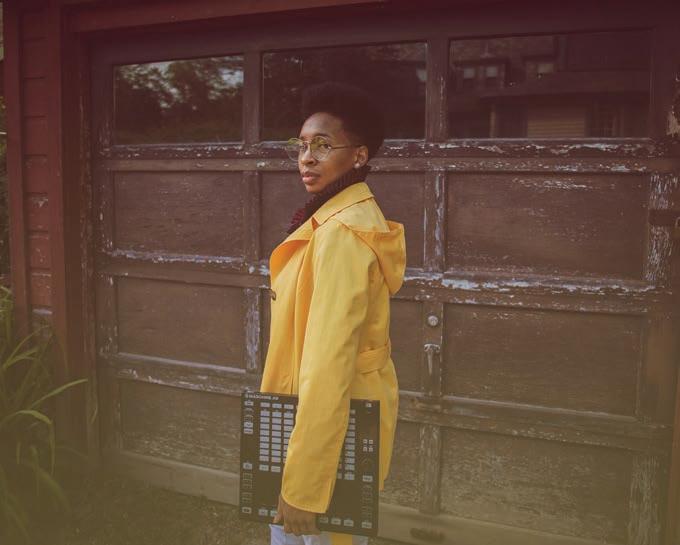 —LEOR GALIL
—LEOR GALIL
for the week
Bloodmist, phos
5049 Records bloodmist.bandcamp.com/album/phos-pre-sale
Given the diverse CVs of Bloodmist’s members, the trio’s music could be many things. Clarinetist and synthesizer player Jeremiah Cymerman has made solo recordings that bridge free improvisation and electronic sound design; synth alchemist and drum programmer Mario Diaz de Leon composes unabashedly dramatic acoustic chamber pieces and electronic metal; and bass guitarist Toby Driver leads ever-evolving goth-prog combo Kayo Dot. But if you had to put your money on just one descriptor, you’d win big if you picked the word “dark.” The array of enormous sounds and hackle-raising textures on Phos combines the spontaneity of improvisation with the full potential of digital postproduction. The trio recorded the material live during one night in the studio, a er which Cymerman and engineer Marc Urselli passed it back and forth, blowing it up and cutting it down. The results feel massive enough to generate their own gravity—especially when heard through headphones. On “Incantatory Sentience,” twanging strings and detonating beats circle around your head like a midnight dance enacted by blacked-out skyscrapers. “Corpuscular Refraction” is even less decorous, launching one blast a er another, each more withering than the last. From start to finish, Phos sustains a black-onblack atmosphere illuminated only by the occasional spray of aerosolized crimson. —BILL MEYER
Mary Chapin Carpenter, The Dirt and the Stars Lambent Light marychapincarpenter.com
Mary Chapin Carpenter’s twangy, peppy hits bounced up the country charts in the 90s, but their cowboy boots always seemed like they pinched a bit. Twenty-some years later, Carpenter’s records have eased into a more comfortable idiom, scuffing up their coffeehouse folk with a bit of rock. On The Dirt and the Stars (Lambent Light), her voice has lost a lot of its snap and range, but its ragged edge fits well with her confessional, resolutely earnest approach. She includes the obligatory antiTrump anthem (“American Stooge”), and the title track is an ill-advised AOR ballad that clocks in at

Mary Chapin Carpenter AARON FARRINGTON
a really unnecessary 7:43, complete with the usual guitar histrionics. The songs to show up for—which outnumber the missteps—are the frankly maudlin midtempo melodic strummers. On “It’s Okay to Be Sad” Carpenter sings, “Instead of breaking I’m hoping / The cracks beginning to spread / Is me breaking open,” conveying wounded uplift with a mixture of vulnerability and hope that seems engineered with almost surgical precision to put a tear in your eye and leave you verklempt. On “All Broken Hearts Break Differently” she finds the brighteyed core of the sad pop song, and offers all her forlorn listeners the chance to be dreamily miserable alone together in one languid, undemanding groove. Sometimes veteran performers can lose their way as their mainstream audiences move on to new trends, but Carpenter seems to have found her true home out amidst the dirt, the schmaltz, and the stars.
—NOAH BERLATSKY
Cold Beaches, Drifter
Self-released coldbeaches.bandcamp.com/album/dri er
Cold Beaches are one of the most aptly named bands I’ve discovered this year: their new album, Dri er , evokes a decidedly beachy but sometimes gloomy world that makes me think of walking along an east-coast oceanfront in the fall. The band started as the solo project of Chicago singer-songwriter and guitarist Sophia Nadia, who grew up in the Maryland suburbs of D.C. After spending a few years in Richmond, Virginia, where she wrote and self-released Cold Beaches’ 2016 debut, Aching , she moved here in 2017. By the time Cold Beaches recorded their 2018 album, Stay Here, Nadia had put together a band—the personnel involved have shifted over the years, but multi- instrumentalist Eric Novak and guitarist Charlie Atchley have been aboard for every release since. Together they’ve evolved Cold Beaches’ early lo-fi bedroom melodies into the surf-rock-infused indie pop that remains their core on Dri er . In fact, Atchley and Nadia’s garage riffs on songs such as “Band Boy (Redux)” signal a turn to a louder, more emphatic guitar-based sound—though Nadia’s voice has remained a constant throughout. Her sweet, sometimes breathy tone works well with the jangle pop on “Problems and Heartache (I Got Them),” but she can also really belt out the notes—and she proves
32 CHICAGO READER - AUGUST 6, 2020 ll
Jovan Landry, World Vibe Self-released jovan.bandcamp.com THE
WEEK
Chicago rapper Jovan Landry gives her production skills a well-deserved spotlight of August 6
Recommended and
COURTESY THE ARTIST
it on the chorus of “Somebody.” With Dri er, Cold Beaches continue to challenge themselves to ride the perfect wave.

—SALEM










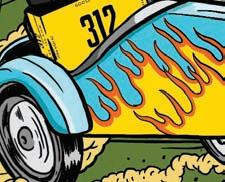



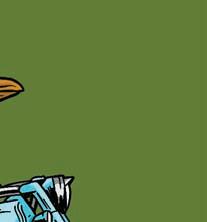


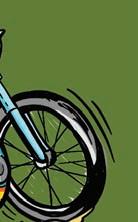













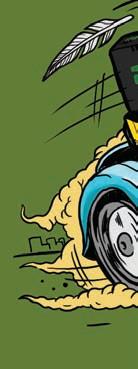

Cutta, PHysicalism




 COLLO-JULIN
COLLO-JULIN
Self-released cuttawhatup.bandcamp.com
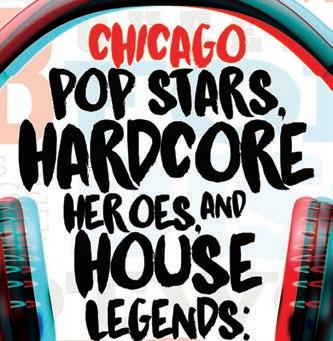




Paul Gulyas is one of those tireless contributors to Chicago music whose work largely goes unnoticed by the public. If you’ve gone to a show at Beat Kitchen or Subterranean in the past few years, you might’ve seen him behind the soundboard. He’s also a musician and producer, and he’s earned a modicum of fame in Chicago hip-hop under his stage name, Cutta—New Deal Crew dynamo Chris Crack regularly shouts him out in his songs. (I’ve lost count of the times Chris ad libs “Cutta what up?”— and not just because he puts out albums faster than I can keep up.) In his solo recordings, Gulyas usually blends hip-hop, R&B, and funk, but on his new EP, Physicalism , he goes full rock, blurring glam swagger, psych transcendence, and rootsrock rambunctiousness into tight, lean songs. Earlier this year, Gulyas and his partner were sidelined with COVID-19, and though they both recovered before the release of Physicalism in early July, he worked on the EP while still sick—he says he felt the need to create something when faced with his own mortality. Despite the emotional and physical obstacles he endured while making these songs, he infuses them with a generous sense of calm. At the top of the earthy “A Strange Flower,” Guylas drops from a strange falsetto into a slack near whisper, exuding a tranquility I can only hope to find.
—LEOR GALIL

Juice Wrld, Legends never die Grade A/Interscope legendsneverdie999.shop
By the time Chicago rapper Juice WRLD died in December at age 21, he’d already made a gigantic impact on hip-hop. His meteoric rise started when he was just a teenager with the 2017 single “Lucid Dreams,” a landmark in the burgeoning “emo rap” genre, which exploded after he rerecorded it for his 2018 debut full-length, Goodbye & Good Riddance . The whole album was a stone cold master-
piece; Juice sang some of the catchiest melodies ever put to tape over slick, ethereal trap beats, weaving in poetry about self-doubt, isolation, and drug use. But barely a year and a half after the release of Goodbye, pills and lean—the same things Juice’s fans loved to hear him sing about so beautifully—became his demise. He overdosed on oxycodone and codeine on a flight back home to Chicago, just days a er his birthday. Juice allegedly le behind something like 2,000 unreleased songs, 21 of which have made their way onto his new posthumous release, Legends Never Die . These tracks follow the Juice WRLD formula: they walk the line between pop and trap, with haunting melodies and profoundly sad lyrics. His approach on these new songs is a bit more streamlined than in the past: they’re less up and down, with a smoother flow, and he’s more economical, clean, and concise in his delivery. Legends Never Die shows what a talent Juice had grown into, and how much promise he still had when his life was cut short. And the matter-of-fact way he lays out his issues with mental illness and substance abuse makes the whole record feel even more sad and eerie. Rumors of further posthumous Juice WRLD releases already abound on the Internet, so maybe Legends Never Die—which feels like a nice capstone to a short but powerful career—won’t be the last we hear of him.
—LUCA CIMARUSTI
Nest Egg, Dislocation
Little Cloud/The Acid Test nestegg.bandcamp.com/album/dislocation
I was once at a Nest Egg gig where a friend said to me, “The thing I love about these guys is that they’re punks who just happen to play psychedelic music.” This joyously astute statement gets at something important about psychedelia: though the word often conjures lovey-dovey visions of the pastoral and the perfumed, 1970s movements such as Krautrock and Eurorock took these heady, trance-inducing sounds into much bleaker and more experimental terrain. I’m pretty sure I’ve read that David Thomas of Cleveland protopunk gods Pere Ubu has described his band’s music as psychedelic, but under a veil of darkness (or something poetic like that). And Nest Egg’s driving acid punk brews up a similarly malevolent storm. The Asheville band formed in 2011 and released their first LP,
AUGUST 6, 2020 - CHICAGO READER 33
MUSIC
BIT.LY/GOOSEDELIVERS chicagoreader.com/leorbook Donate to get Leor Galil's best articles over the past 10 years of Chicago music!
Cutta
CHRIS CRACK
MUSIC


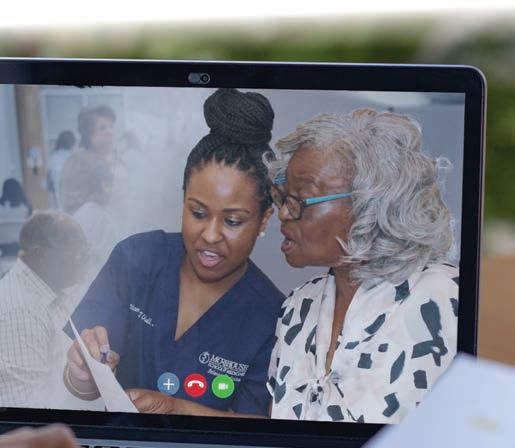





Find more music reviews at chicagoreader.com/soundboard.
from 33
the incendiary Respectable , in 2015. The trio features Harvey Leisure on fuzzed guitar and cavernous vocals and Ross Gentry on driving bass and textural keys, but their not-so-secret weapon is drummer Thom Nguyen. He excels at the hard-hitting motorik rock beat and moonlights with avant-garde experimental types such as guitarist Tashi Dorji; he brings the expansive subtleties he employs in the improvisational realm to Nest Egg’s gargantuan sound. The band’s new LP, Dislocation, opens with Nguyen’s drum attack on the savage epic “Eraser,” where his frenzied tom-tom rhythms propel Leisure’s jagged, scuzzed-out guitar and menacing, nihilistic vocals, intoned from the void—and then the whole band roars to a fearsome, noisy boil. This sure isn’t yer grandmum’s psychedelia: Nest Egg come off more like an angry, determined, and fiercely minimalist postpunk band a la Wire or Killing Joke. The track “Helix” could invite comparisons to Hawkwind or Can, with its nine-plus minutes of floating sonics following a single unrelenting chord progression, but it’s not as easy as you might think to draw lines between prog, Krautrock, and punk— Hawkwind supposedly once had Johnny Rotten as a roadie. Why not just invent a new name and call Nest Egg “maxi-minimalism”? This style is best heard on the darkly excessive nine-minute jammer “Gore,” which barely has any riff or progression at all and only really changes in the density and volume of its guitar scree—imagine if the Gun Club
joined Faust and Whitehouse for a gig at the dawn of the apocalypse (the actual apocalypse, I think, is due in just a few minutes). And right when you think you’ve figured out the Egg’s modus operandi, they throw in a posthardcore blast on the comically named “What ! ! ? ? ! I’m a Bastard ! ! ? ? !” By the end of Dislocation I’ve mentally crowned Nest Egg the Band Most Capable of Scoring the Collapse of Civilization With Bong in Hand. That’s high praise these days. Invest in Nest Egg’s latest endeavor, as it may very well be the last best musical document of the end. My only friend. The end. —STEVE KRAKOW

Ocean Cult, Elastic Era
Self-released oceancult.bandcamp.com/album/elastic-era
Over the past decade, it’s o en felt like everyone in Chicago’s underground-rock subscenes was legally required to have multiple projects, and Jeff Kelley certainly cleared that bar. He fronted frazzled artrock group Vaya, mathy indie-pop outfit Dick Wolf!, and ragged new-wave band New Drugs. When he wasn’t making music, Kelley helped document the scene as cofounder and creative director of Chicago Singles Club, a hybrid music-journalism outlet and record label whose activity sadly tapered off in the late 2010s (the site stopped posting monthly artist profiles in 2016, but continued to host events for about another year). These days Kelley focuses
on his solo project, Ocean Cult, which builds on the complicated mathletics of Dick Wolf! and the peculiar, irascible angles of Talking Heads. On Ocean Cult’s new debut album, Elastic Era, Kelley stretches out as a singer and songwriter, reaching past his old prickly ruggedness to embrace a heartfelt flamboyance. On “Touch Me, Electricity” he delivers the hook atop a patchwork of zigzagging synths, his voice swooping down from its highest register into a sensual croon—and his confidence makes the song glow. —LEOR GALIL

Steve Von Till, No Wilderness Deep Enough Neurot
stevevontill.bandcamp.com/album/no-wildernessdeep-enough
Steve Von Till is best known as co-front man of the mighty Neurosis, but for two decades the singer, multi-instrumentalist, and poet has also led an ambitious solo career. Under his own name he’s released dark pastoral folk, and as Harvestman he’s made dynamic, psych- and drone- infused music. On his new album, No Wilderness Deep Enough (released alongside a new book titled Harvestman: 23 Un titled Poems and Collected Lyrics ), Von Till merges those personas with glistening ambient washes and somber neoclassical arrangements. He began working on the album in early 2018, first recording stark
piano melodies on the rural land in northern Germany that his wife’s family has farmed for more than 500 years and then adding electronic elements at his home studio in Idaho. He originally intended No Wilderness Deep Enough to be strictly instrumental, but when he consulted producer Randall Dunn about incorporating French horn and cello in the studio (provided by Aaron Korn and Brent Arnold, respectively), his friend challenged him to add lyrics. Though the music certainly could’ve stood on its own, Von Till’s deep voice and contemplative delivery help draw threads connecting heaven and earth and his ruminations on longing, loss, and humanity, which lie at the album’s core. “Indifferent Eyes” seems to cast its glance upward—its shooting-star synths cascade into serene piano and cello, as if providing a glimmer of light by which Von Till can study the possibilities in detachment, the unknown, and connection. On the brooding, textural “Shadows on the Run,” he ponders the esoteric mysteries of the universe and the legacies of those who’ve le this plane of existence. Neurosis at their most turbulent and commanding can summon all the heaviness of the world—a sonic manifestation of Atlas bearing his load—even as they break into cosmic catharsis. No Wilderness Deep Enough carries some of that same weight, but for all the enormity of its spacious meditations, they also offer us a chance to stretch out, take a breath, and even tap into untouched sources of strength before we head into the next storm.
—JAMIE LUDWIG v
34 CHICAGO READER - AUGUST 6, 2020 ll
continued
Learn about clinical research in our community. awareforall.org To learn more, go to CHICAGO, IL VIRTUAL COMMUNITY EVENT Webinar and Virtual Health Fair
EARLY WARNINGS
na’s Comedy Shack at Reggies’, postponed until a date to be determined
GOSSIP WOLF
A furry ear to the ground of the local music scene
GOSSIP WOLF FIRST caught wind of local producer-rapper Montana Macks in 2015, when his work appeared all over the Rich Jones EP Pigeons & Waffl es. Macks has been a little quiet for the past couple years, but he’s had his hands full working on an instrumental album called Arrivals & Departures . He tells Gossip Wolf that he began working on it when Jones suggested he compile his unreleased material for a beat tape—but because Macks has been recording for around a decade, he has a whole lot of unreleased material. “We collectively went through over 2,500 beats to make these selections,” he says. The tracks collected on Arrivals & Departures have a soulful, sophisticated, and thoroughly relaxing vibe; the album drops Friday, August 7.
Composer and multi- instrumentalist Anni Rossi le for New York in 2010, but Gossip Wolf will always consider her a Chicagoan. After all, her outstanding 2009 full-length, Rockwell, is still the best (if not only) album named a er the startand-stop street that runs north-south the whole length of the city. For the past few years, Rossi has been releasing mixtapes of what she calls “strange pop experiments, curiosities, comedy and characters.” Last week, she dropped the latest installment, a charmingly homemade video mix called House of Rossi . “Most of these songs and videos were captured on my iPad and DV camera in restaurants, airplanes, trains, on tour, with friends or at home,” she says. The mix is streaming on Spotify and YouTube, and Rossi is already on to new projects—including an EP due later this year and a 2021 full-length produced by Bobb Bruno of Best Coast.
Last week local arts nonprofit Quiet Pterodactyl dropped the all-star compilation SituationChicago , which benefits 25 of the city’s music venues. It contains tracks from Jeff Tweedy, White Mystery, Big Silky, Ric Wilson, Girl K, Dee Alexander, the Twilite Tone, and 18 other amazing local acts! —J.R. NELSON AND LEOR GALIL
Got a tip? Tweet @Gossip_Wolf or e-mail gossipwolf@chicagoreader.com.

NEW
MG Bailey 9/19, 3 PM, Reggies’ Roof Deck F
Belvederes 8/21, 9 PM, Brauerhouse, Lombard JC Brooks (duo) 8/23, 7 PM, SPACE, Evanston b Jarod Bufe Quartet 8/19, 7 PM, FitzGerald’s, Berwyn F Toronzo Cannon 9/4, 7 PM, SPACE, Evanston b Chicago Farmer 8/15, 7 PM, FitzGerald’s, Berwyn F Chicago Honky Tonk DJs 8/16 and 8/30, 3 PM, FitzGerald’s, Berwyn F
Chicago Skyliners Quartet 8/16, 7 PM, FitzGerald’s, Berwyn F Chicago Soul Spectacular 8/28, 7 PM, Salvage One Corcoran Brothers 8/15, 4 PM, FitzGerald’s, Berwyn F Billy Crockett 8/13, 7:30 PM, livestream at bluerocktexas. com/events b Dogleg 8/24, 8 PM, livestream broadcast live from Lincoln Hall at audiotree.tv b EOB 6/5/2021, 7:30 PM, Metro, 18+
Sam Fazio Trio 8/23, 1 PM, SPACE, Evanston b FitzGerald’s Community Truck presents Working Mother 8/15, 3 PM, concert will travel through Berwyn F b Chris Greene Trio 8/16, 1 PM, SPACE, Evanston b Guns N’ Roses 7/21/2021, 6 PM, Wrigley Field b Halestorm 7/14/2021, 7:30 PM, Rialto Square Theatre, Joliet b
Heat by Ron Carroll featuring Mickey Calvin, DJ Lil John, Melvin Gentry Thursdays at 7 PM through 11/25, livestream at facebook.com/nocturnechicagolive F b
Holy Fuck 3/19/2021, 9 PM, Lincoln Hall, 18+ Keefe Jackson/Peter Maunu/ Julian Kirshner 8/29, 8:30 PM, livestream at youtube.com/user/constellationchicago F b Peter Joly Group 8/18, 7 PM, FitzGerald’s, Berwyn F Jon Langford 8/26, 7 PM, FitzGerald’s, Berwyn F Ben Lee 8/22, 6 PM, Livestream at citywinery.com/chicago b Lil Jon 12/12, 8 PM, Brauerhouse, Lombard Ricky Liontones 8/29, 3 PM, Reggies’ Roof Deck F Lisker Music Ensemble 8/14, 8/21, and 8/28, 6:30 PM, Ace Hotel
LP’s Happy Hour featuring Lawrence Peters and more 8/14, 5 PM, livestream at hideoutchicago.online b Matis Trio with Matisyahu 5/7/2021, 8 PM; 5/8/2021, 6 and 9 PM, City Winery b Metropolis String Quartet 8/26, 9 PM, Ace Hotel
Mud Morganfield (trio) 8/14, 4:30 and 7 PM, SPACE, Evanston, 7 PM sold out b Oh Yeahs 8/15, 1 PM, FitzGerald’s, Berwyn F
Option series presents Molly Jones & Angel Bat Dawid 8/31, 8 PM, livestream at twitch.tv/experimental_sound_ studio F b
Frank Orrall 8/22, 7 PM, SPACE, Evanston b Jayke Orvis 8/15, 3 PM, Reggies’ Roof Deck F
Cathy Richardson 8/15, 7 PM, SPACE, Evanston b Kaitlyn Aurelia Smith 8/13, 8:30 PM, livestream at outermostagency.com/stream/ kaitlyn-aurelia-smith-empty-bottle b
Sudden Impact Series with Jeff Chan 8/13, 7 PM,
livestream at facebook.com/ HairpinArtsCenter F b Summer Sessions featuring DJ Fresh Da Juice 8/14, 5:30 PM, the Promontory Sun Speak 9/5, 8:30 PM, livestream at youtube.com/user/ constellationchicago F b Tierra Roja 8/13, 7 PM, FitzGerald’s, Berwyn F Louis Tomlinson 4/15/2021, 8 PM, Chicago Theatre b Trimpin 8/14, noon, livestream at live.nationalsawdust.org/ event/trimpin F b 24-7 Spyz, Sweet Diezel Jenkins, Pipe 4/8/2021, 7:30 PM, Reggies’ Music Joint Western Elstons 8/14, 7 PM, FitzGerald’s, Berwyn F Matthew Whitaker 8/13, 5 PM, livestream at live. nationalsawdust.org/event/ matthew-whitaker F b Wild Earp 8/16, 1 PM, FitzGerald’s, Berwyn F Yoga, Blues, & Brews with Kristin Andrews & Dave Specter 8/29, 1 PM, SPACE, Evanston b
UPDATED
Peter Bradley Adams 8/21, 7 PM, SPACE, Evanston, postponed until a date to be determined b Altered Stage 10/24, noon; 12/12, noon, Reggies’ Music Joint, rescheduled Arcadian Wild 8/14, 7 and 9:30 PM, FitzGerald’s, Berwyn, moved to FitzGerald’s, 9:30 PM show added F Bendigo Fletcher, 8/12, 8 PM, Schubas, canceled Black Pumas, Seratones 8/28, 8:30 PM, Thalia Hall, postponed until a date to be determined, 17+ Brand X 9/19, 7:30 PM, Banan-
David Bromberg 3/5/2021, 8 PM, Maurer Hall, Old Town School of Folk Music, rescheduled b Built to Spill 8/12, 8:30 PM, Thalia Hall, postponed until a date to be determined, 17+ Luke Combs, Ashley McBryde, Ray Fulcher 11/4/202111/5/2021, 7 PM, United Center, rescheduled; tickets purchased for original and previously rescheduled dates will be honored b
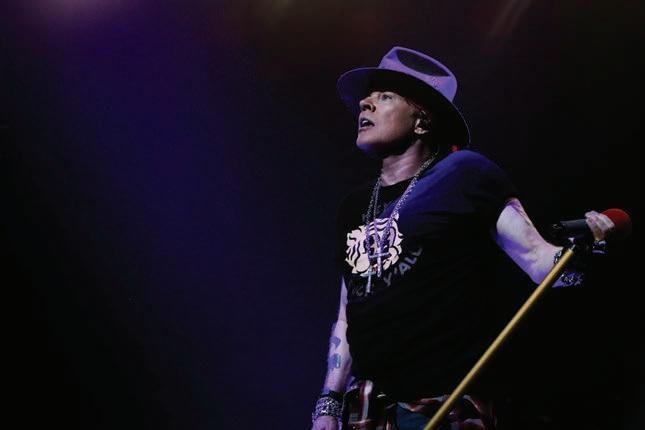
Leo Dan 8/21, 8 PM, Thalia Hall, canceled
Charlie Daniels Band, Marshall Tucker Band 9/11, 7:30 PM, Rialto Square Theatre, Joliet, canceled
De ones, Gojira, Poppy 8/17/2021, 7 PM, Huntington Bank Pavilion, rescheduled b Dwayne Dopsie & the Zydeco Hellraisers 8/19, 6 PM, Harris Theater, canceled
Emancipator Ensemble 9/25, 10 PM, House of Blues, canceled
Furious Bongos 11/4, 7:30 PM, Reggies’ Rock Club, canceled
Girl Talk 5/4/2021, 8 PM, Metro, postponed until a date to be determined, 18+
Trevor Hall 4/23/2021, 7:30 PM, the Vic, rescheduled, 18+ Hot Water Music, Able Baker Fox, Airstream Futures 9/2, 8 PM; 9/3, 8 PM, Cobra Lounge, canceled
Enrique Iglesias, Ricky Martin 9/30/2021-10/1/2021, 7:30 PM, Allstate Arena, Rosemont, rescheduled; tickets purchased for the original dates will be honored b
Joywave 9/11, 8 PM, Subterranean, postponed until a date to be determined b
Judas Priest 9/26, 8 PM, Rosemont Theatre, Rosemont, canceled
Juice 8/13, 8 PM, Subterranean, canceled
Alicia Keys 8/24/2021, 8 PM, Huntington Bank Pavilion, rescheduled; tickets purchased for the original date will be honored b
LA Priest 11/15, 9:15 PM, Empty Bottle, canceled
La Roux 11/17, 7:30 PM, Park West, canceled
Loose Ends 9/7, 5 and 8 PM, City Winery, postponed until a date to be determined b
Los Angeles Azules 9/19, 8 PM, Allstate Arena, Rosemont, canceled
Stephen Lynch 8/15, 7:30 PM, Park West, postponed until a date to be determined
Taj Mahal Quartet 9/28, 6 and 9 PM, City Winery, postponed until a date to be determined b
Mdou Moctar, Steve Gunn
Never miss a show again. Sign up for the newsletter at chicagoreader. com/early
10/2, 10 PM, Empty Bottle, canceled
Monsieur Periné 3/10/2021, 8 PM, City Winery, rescheduled b
John Moreland, S.G. Goodman 4/24/2021, 8:30 PM, Thalia Hall, rescheduled, 17+
Murder by Death, Amigo the Devil 3/13/2021, 8 PM, Thalia Hall, postponed until a date to be determined, 17+
Mike Reed’s Loose Assembly 8/15, 8:30 PM, Constellation, in person at the venue and concurrently livestreamed at youtube.com/user/constellationchicago 18+ Revivalists 9/17/2021, 8 PM, Aragon Ballroom, rescheduled, 17+
RJD2 8/15, 8:30 PM, Thalia Hall, canceled
Marco Antonio Solís 8/15, 8 PM, Allstate Arena, Rosemont, canceled
Paul Thorn 10/28, 8 PM, City Winery, postponed until a date to be determined b
Tiny Meat Gang (Cody Ko & Noel Miller) 7/17/2021, 8 PM, Chicago Theatre, rescheduled b
Wardruna 10/1/2021, 8:30 PM, Auditorium Theatre, rescheduled; tickets purchased for the original date will be honored b
Bob Weir & Wolf Bros 10/20, 7 PM, Chicago Theatre, canceled
Young Dolph 8/22, 8 PM, the Vic, postponed until a date to be determined, 18+
UPCOMING
Cybertronic Spree 3/8/2021, 8 PM, Lincoln Hall, 18+
Dead Can Dance, Agnes Obel 4/28/2021, 6:30 PM, Chicago Theatre b
Elephant Stone, Al Lover, Tinkerbelles 3/24/2021, 9:30 PM, Sleeping Village
Flamenco Americana with Kati Golenko & Miguel Reyes 12/2, 8:30 PM, Szold Hall, Old Town School of Folk Music F b Fratellis 1/22/2021, 8 PM, Metro, 18+
King Krule, Lucy 12/2, 7:30 PM, Riviera Theatre, 18+
Bill Kirchen 4/7/2021, 8 PM, SPACE, Evanston b Knuckle Puck 11/20, 8 PM, Subterranean, 17+
Bonnie Koloc, Ed Holstein 11/6, 8 PM, the Promontory b v
AUGUST 6, 2020 - CHICAGO READER 35
Axl Rose COURTESY OF LIVE NATION
CHICAGO SHOWS YOU SHOULD KNOW ABOUT IN THE WEEKS TO COME
b ALL AGES F
WOLF BY KEITH HERZIK
Q: I’m a gay guy who’s involved with a guy I met a few months before COVID19 took off. He’s a great guy, smart, funny, hot, healthy, and easy to be around. It started as a hookup but we have chemistry on several levels and, without either of us having to say it, we started seeing each other regularly. We both live alone and decided to be exclusive due to the pandemic. I honestly don’t know what we’re doing here. It’s some combination of friends, fuck buddies, and married couple all at the same time.







I wanted to just keep a good thing going, but he just threw me a curveball that I need help figuring out how to handle. Out of the blue he told me he held back telling me about his foot fetish. He says he’s had very bad experiences with guys who weren’t into it. He’s been keeping it to

himself and looking at stuff online. I’m pretty vanilla and not into it, but I know kinks are a thing for a lot of guys and I’m willing to help out a good guy. I’m a longtime reader of yours, Dan, and being GGG is important to me. So I asked him to tell me what that means and what he wants to do. He wants to massage, wash, and kiss my feet, and suck my toes. OK, that’s not hot to me, but it’s probably doable once in a while. He thankfully doesn’t need me to do anything with his feet.


But there was more. I can’t believe I’m writing this: He asked if I would let him paint my toenails sometimes! WTF? He could barely say it and looked kind of sick after he did. We’re both conventional cis men. He claimed it’s not about making me femme. He says it’s just a hot thing for him. I know there’s no explanation for why people


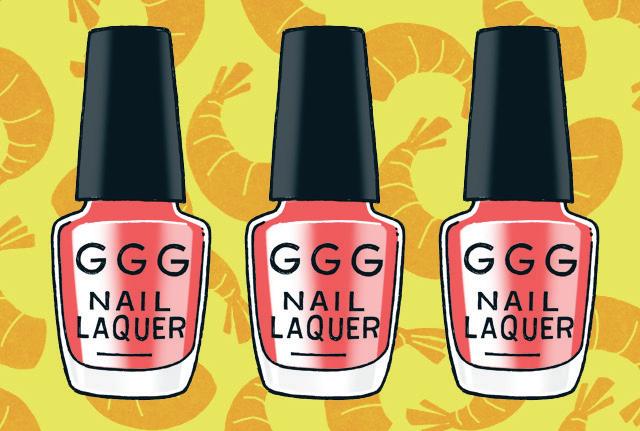
have kinks, but do you have any ideas what this is about? I didn’t respond at all and we haven’t talked about it since. I’m not proud of that. I’m freaked out by this and not sure what to make of it. I don’t want to ask him directly if this is the price of admission because that seems too big a price to pay and I really don’t want it to be his price.
—FREAKED OUT OVER TERRIFIC PERSON’S EROTIC REVELATION VIBE
A: From your panicked response, FOOTPERV, you’d think this poor guy wanted to cut your toes off and masturbate while you bled out. Dude. He just wants to paint your toenails—as prices go, that’s a very small price to pay for smart, funny, and hot.
Yeah, yeah: you’re both conventionally cis and presumably conventionally masculine. Since we’ll never know what caused him to have this

36 CHICAGO READER - AUGUST 6, 2020 ll
SAVAGE LOVE Don’t freak out because he wants to paint your toenails He’s not asking you to be turned into a mummy or used as a urinal.
DAN
OPINION the cannabis platform a Reader resource for the canna curious Thursdays on Cannabis Conversations chicagoreader.com/joravsky Cannabis Conversations chicagoreader.com/ joravsky www.neuromedici.com 312-772-2313 Findouttoday ifmedical cannabisorinfusiontherapyis rightforyou.Telemedavailable! Yourpartnersinhealthandwellness. Serving medical cannabis patients since 2015. GET INVOLVED! A cannacopia of fun! CBD / cannabis recipes, psychedelic drawings to color, word puzzles to stimulate your brain, growing tips, and more! Print and digital versions available. chicagoreader.com/420book Reader 420 Companion Book To advertise, call 312-392-2934 or email ads@chicagoreader.com
By
SAVAGE
OPINION
particular kink—kinks really are mysteries—let’s just run with that: He thinks this is hot—or his dick thinks this is hot—because guys like you aren’t supposed to have painted toenails and guys like him aren’t supposed to paint toenails, FOOTPERV, and this small transgression against gender norms makes his dick hard because it does. While it’s not always the case with all kinks, in this instance the most obvious explanation is the likeliest explanation. Moving on . . .






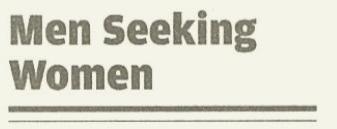


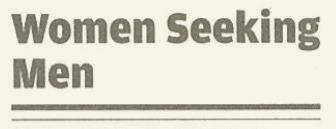




You say he’s a great guy, you say you enjoy being with him, and you say you’re a longtime reader. So you had to know that I was gonna say this: buy some fucking nail polish already and leave it on the nightstand where he can see it and let him paint your fucking toenails.
And if you really hate it, FOOTPERV, if it freaks you out to have polished toenails—or if your masculinity is really so fragile it shatters under the weight of toenail polish—then you don’t have to do it again. But I also gotta say, as off-the-wall sexual requests go, this is a small ask. If you were claustrophobic and your boyfriend wanted to mummify you, FOOTPERV, or if he wanted to use you as a urinal and you weren’t into piss, I would totally give you a pass. Some sexual requests are big asks and the third “G” in GGG (“good, giving, and game”) has always been qualified: “game for anything— within reason.” Some sexual requests are huge asks, some prices of admission are too steep, and some desires can only be accommodated by people who share them. But this request—what your COVID-19 spouse wants to do to you—is a small ask and a small price, FOOTPERV, in no way comparable to being turned into a mummy or used as a urinal. So smoke


a little pot, put your feet on the nice man’s lap, and try to take pleasure in the pleasure you’re giving.
If I sound a little impatient, FOOTPERV, I apologize. We live in a deeply sex- and kink-negative culture and our first reaction when a partner discloses a kink is often a knee-jerk negative reaction to the idea of kinks at all. In the moment we can fail to distinguish between the big ask/steep price and the small ask/small price. And I hope you can see the compliment this great, smart, funny, hot guy was paying you when he asked. He felt safe enough to share something with you that other guys have judged and shamed him for. Take the compliment, buy the nail polish, pay the price.
Q: I am a 37-year-old female who almost three years ago got out of a six-year toxic, violent relationship with a man I believe I loved. A er I le him for good my life started to improve in so many ways. However, it seems that my once very healthy sexual desires have died. Ever since we broke up I haven’t felt any sexual needs or attraction toward anybody. I honestly think there’s something wrong with me. I can’t even picture myself having intimacy again. A year ago, I went out on a couple of dates with a man younger than me, he was cute and very interested in me but I just didn’t feel the connection. I really don’t know what to make of this situation. Any advice is profoundly appreciated.
—JUST ANOTHER GAL
A: Could it be a coincidence? Besides ridding yourself of a toxic and abusive ex—and that’s harder than people who haven’t been in an abusive relationship o en realize, and I’m so glad you got away from him—did something else happen three years ago that could’ve tanked
your libido, JAG? Did you go on meds at the time for depression or anxiety? Could an undiagnosed medical condition that came on at roughly the same time create a libido-tanking hormonal imbalance? Did you go on a new form of birth control in anticipation of the sex you’d soon be having with other, better, nicer, hotter, kinder men?
If nothing else is going on—if you aren’t on meds for depression or anxiety, if you’ve had your hormone levels checked and they’re normal, if a new form of birth control isn’t cratering your libido—then the most obvious and likeliest answer is probably the correct one: three years after getting out of an abusive relationship, JAG, you’re still reeling from the trauma. And the best advice is also the obvious advice: find a sex-positive therapist or counselor who can help you work through your trauma and reclaim your sexuality. Even if you were to get your hormone levels checked or adjust your psych meds or switch to a new birth control method, I would still recommend seeing a counselor or therapist.
And even if the thought of being intimate with others causes you stress and makes you anxious, JAG, you can still explore solo sex. You don’t have to wait for the right hot young man to come along in order to reconnect with your sexuality. You can read or write some erotica, you can splurge on an expensive sex toy (have you seen the new clit-sucking vibrators?), you can watch or create porn. Really enjoying yourself may be the first step toward enjoying others again. v
Send letters to mail@ savagelove.net. Download the Savage Lovecast at savagelovecast.com.
@fakedansavage
AUGUST 6, 2020 - CHICAGO READER 37
JOE NEWTON TIRED OF DATING APPS? Meet people the old-school way. FREE at chicagoreader.com/matches
CLASSIFIEDS
JOBS
GENERAL
Dermacare LLC seeks a Chief Technology Officer in Chicago, IL to improve stability & reliability of online video physician visits; build rich features for better online visit experience; and, build A.I. based medical asst. to facilitate better patient/ provider interaction & communication. Submit resume to: steve@ dermacare.com.
Global Design Director, Ford Land – positions offered by Ford Motor Company (Chicago, IL). Develop & implement comprehensive human exp design strategies that embody the Ford culture & brand ethos for workplace, retail, hospitality, learning & dvlpmnt & cultural projects, globally. Employee reports to Chicago, IL, but may telecommute from any location w/i the U.S. Apply online: corporate. ford.com/careers
w/ customers to advise on complex use of Oracle HRMS products & resolving highly complex & mission-critical issues. Reqs. BS+5yrs exp.; Mail resume to: Attn: HR (000227), 2850 Golf Rd., Rolling Meadows, IL 60008. Must Ref Job Title. EOE.
Profusion Foods Inc. seeks an Operations Research Analyst based at Chicago, IL to optimize sales efficiency. Position req a Master’s degree in Biz Admin, etc. & 1+ yrs of exp. Send resume to E. Chen, President, PFI, 7131 W 61st St, Chicago, IL 60638
Development Engineer. Must have experience with developing and shipping software products that incorporate machine learning and data science. Must also have experience with Python, C++, SQL, Mongo, Javascript, Kubernetes/Docker. The position offers the option of limited telecommuting up to 20% of the time. All telecommuting must be done within 50 miles of the main worksite. Qualified applicants should submit their resume to careers@4cinsights. com and reference code DSDE0720.
Wanted Experience
ADULT SERVICES
Danielle’s Lip Service, Erotic Phone Chat. 24/7. Must be 21+. Credit/ Debit Cards Accepted. All Fetishes and Fantasies Are Welcomed. Personal, Private and Discrete. 773-935-4995
PERSONALS
JOBS
Core Software Process Engineer – positions offered by Ford Motor Company (Chicago, IL). Define proc, methods & tools to implmnt enterprise level soft release & configurat’n mngmnt in supp of SW delivery & configurat’n. Apply online: corporate. ford.com/careers
WAFIOS Machinery Corp – Nat’l Product Sales Mgr, Forming Machines – Mokena, IL. Provide technical demonstration for customers/prospects & represent company at events. Develop quote strategies. Provide & implement strategy for sales closures. 50-70% travel req’d (mostly domestic). Bachelor’s or equiv in Industrial Eng’g, Eng’g Mgmt, Technology Mgmt or related req’d & 3 yrs exp.: as technical sales mgr in fastener industry; w/ company prospecting, research, & developing new accounts, presenting product &/or solution, negotiating terms & closing deal; managing facets of cold forming & thread rolling machine sales; w/ cold forming machines; & meeting sales targets. Resume to HR@WAFIOS.US.
Arthur J. Gallagher Service Company, LLC in Rolling Meadows, IL seeks an Global HRIS Technical Manager to manage & deliver on projects, both local & global, working directly
Northwestern Memorial Healthcare seeks Cytogenetic Technologists for Chicago, IL to perform test procedures in the Cytogenetics Laboratory & convey the results to the physician. Bachelor’s degree in Genetics/MT/ MLS/other field qualifying applicant under 42 CFR Part 493 req’d. ASCP CG certified or eligible req’d. Drug test & background check req’d Apply online: https://jobs. nm.org/ Requisition ID: REF8554M. EOE
Northern Illinois Justice for Our Neighbors seeks Executive Director in Chicago, IL- Implement strategic goals & objectives. Hire staff & volunteers. Chief fundraiser. Prep funding proposals & grant apps. Direct/coord fundrais’g events. Plan, create & administer budgets. Reqs. bachelor’s in Public Admin., business or rltd + 2yrs exp in job offrd or rltd mgr. exp. Exp. in grant writing, fundrais’g & philanthropy; budgeting & fin’l planning, strategic planning, org. dvlpmt; work w/BOD; using CRM DB. Proficient in MS Word, Excel, Access, Power Point, Publisher. Mail CV to B. Holman-Gomez, 77 W. Washington, Ste. 1820, Chicago, IL 60602
Director, Software Development Engineering 4C Insights, Inc. Chicago, Illinois
Developing effective software architecture, enforcing good software development principles, and providing technical oversight. Manage multiple software development teams to create new products or new versions of an existing product. Must have a Bachelor’s degree in software engineering.
The position also requires three (3) years of experience as a Software
Drivers and Movers ASAP Call 773-487-9900
REAL ESTATE
RENTALS
Near Wrigley Field Walk to Paulina Brown Line 2 Bedroom apartment in a beautiful building. One Garage Space. Washer/ Dryer Cable included. Available Sept 1st. Send email to set up a showing. $1,625 per month fletcherknight@aol.com
Wicker Park/Bucktown, 4 rooms, sunny, hardwood floors throughout, electronic security, quiet, great landscaping, walkability rating 96 with Blue Line, 3 buses, library nearby. $1,500 a month includes utilities. Call or text 773.430.7512. Call 773.772.8159.
MARKETPLACE
GENERAL
Zosia’s House Cleaning Hardworking, independent. 20+ years experience. Will clean house, apartment, office. Free estimate included. 630-290-1701
For Sale
8 Drop vans 53’ 20 aluminum & combo flatbeds 48’
6 covered wagons 6 reefers 53’
DOT tested Financing available Call Bruce 815-674-5230 or 815-842-2888
Miracle Massage. Obtain health, energy and joy. Prolong your youth and life. Decrease illness with the possibility of healing. Call Jolanta: (847)640-8989. 5237 W. Addison St. Chicago, IL 60641
GNR, Bandman Buckethead, Aerosmith, M. Crue, ACDC, B. Sabbath. Fun with L. GaGa, J. Bieber, Gwen, Rue. T. Banks, Camilia, S. Mendez, C. Underwood, Monkeys, E. Goldberg Love, Hollywood Rose GNR - Tracy Guns 312-206-0867 773-323-5137
Submit your Reader Matches ad today at chicagoreader. com/matches for FREE.

Matches ads are not guaranteed and will run in print and online on a spaceavailable basis.

38 CHICAGO READER - AUGUST 6, 2020 ll
SALES & MARKETING FOOD & DRINK SPAS & SALONS BIKE JOBS GENERAL REAL ESTATE RENTALS FOR SALE NON-RESIDENTIAL ROOMATES MARKETPLACE GOODS SERVICES HEALTH & WELLNESS INSTRUCTION MUSIC & ARTS NOTICES MESSAGES LEGAL NOTICES ADULT SERVICES
ADMINISTRATIVE
WANT TO ADD A LISTING TO OUR CLASSIFIEDS? E-mail classified-ads@chicagoreader.com with details Chicago Reader chicagoreader.com/puzzle Do Not Touch Puzzle Piece together the first of our iconic Stay Home cover series. u THE chicagoreader.com/donate

































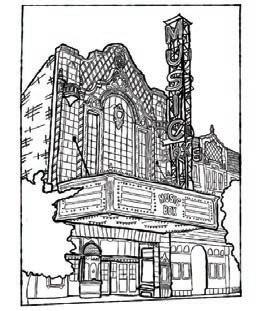

AUGUST 6, 2020 - CHICAGO READER 39 the platform The Chicago Reader Guide to Business and Professional Services www.herreralandscapes.com llllllllllllllllllllllllllllllllllllllllllllllllllllllllllllllllllWe bring your outdoor vision to life! To advertise, call 312-392-2934 or email ads@chicagoreader.com COLLABO TIVE PREMARITAL FAMILY DIVORCE MEDIATION Brigi e Schmidt Bell, P.C. Phone and Video Consultations. Call today. BrigitteBell.com Lawyers@bsbpc.com | 312-360-1124 home improvement sports books legal funeral services entertainment sales@desktoppers.com Alpina Manufacturing, Chicago, IL 1-800-915-2828 773-202-8887 Visit our website or call us for info: desktoppers.com American Owned American Made Custom cut Acrylic desk or table tops Instead of glass, we can Laser cut beautifully protective Acrylic tops We Offer Quality Affordable • At Need Funeral Services • Pre-Planned Funeral Services • Traditional Funeral/Cremation Services • Direct Cremation/Direct Burial • Memorial Services • Specializing in Veterans Services 773-956-4000 5112 S. Western Ave | Chicago, IL 60609 “Let all that you do be done in love” - 1 Cor 16:14 www.GraceAndMercyFS.biz Serving Chicagoland and NW Indiana YOUR AD HERE ENJOY YOUR SPORT IN STYLE your heading here education SERVICE, REPAIR & INSTALLATION SALE AMERICAN BUDGET MECHANICAL HVAC-R DISCOUNT SERVICE COMPANY VISIT: WWW.AMERICANBUDGETMECHANICALSERVICE.COM DISCOUNTED & AFFORDABLE - BY THE JOB OR BY THE HOUR CALL OR TEXT 847-529-0050 24/7/365 EVEN @4AM @ NO EXTRA CHARGE - NEVER OVERTIME LICENSED - BONDED & FULLY INSURED WE FOLLOW ALL CDC SAFETY GUIDELINES FOR COVID-19 SUMMER AC air conditioning •Hybrid Programs (online and/or on-campus) •MRI, X-Ray, Surgery, Dental, Dialysis, Ultrasound & MA/Phl. Programs •Online, Weekend, Evening and Day Schedules •Financial Aid and Grants Available (if you qualify) •Accredited and Affordable Be a Healthcare Hero Stellar Career College 19 S. LaSalle Street, Chicago (Loop) | 312-687-3000 | stellarcollege.edu/chicago WhitneyWasson Instagram:@soberrabbit Twitter:@boozetornado $30 for PDF download $45 for limited edition printed book and PDF download Proceeds will be split between the Reader and the more than 50 artists who contributed illustrations. For copies of this book, either in PDF form or as a printed book, see: chicagoreader.com/coloringbook WhitneyWasson Instagram:@soberrabbit Twitter:@boozetornado Website:thewhitneywasson.com 22 ChicagoReaderColoringBook $30 for PDF $45 for limited printed book download Proceeds will be split between the Reader and the more than 50 artists who contributed illustrations. For copies of this book, either in PDF form or as a printed chicagoreader.com/coloringbook
Don’t miss the newest Chicago Reader “Best of” book, a collection of pieces from more than two decades of work by senior writer Mike Sula: An Invasion of Gastronomic Proportions: My Adventures With Chicago Animals, Human and Otherwise.







chicagoreader.com/sulabook
 By EVAN F. MOORE
By EVAN F. MOORE



































 By JEFF NICHOLS
By JEFF NICHOLS






















































































































































































































 COURTESY IO
COURTESY IO

 By RIMA PARIKH
By RIMA PARIKH












 By KERRY REID
By KERRY REID





 By BRIANNA WELLEN
By BRIANNA WELLEN




















 —LEOR GALIL
—LEOR GALIL





























 COLLO-JULIN
COLLO-JULIN






































































